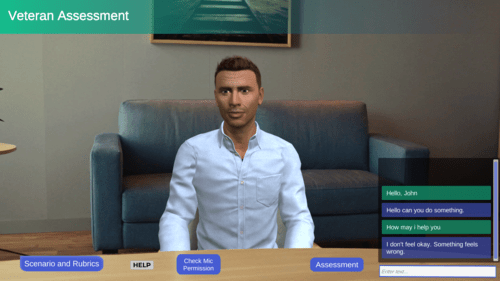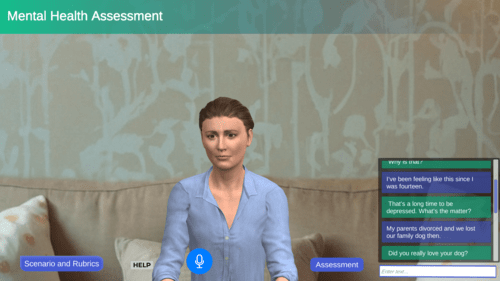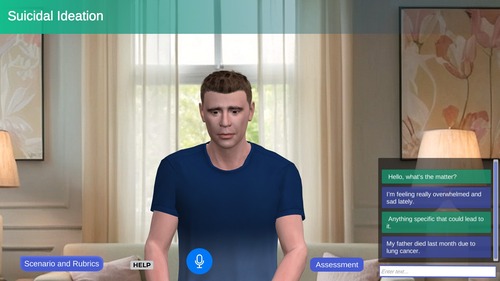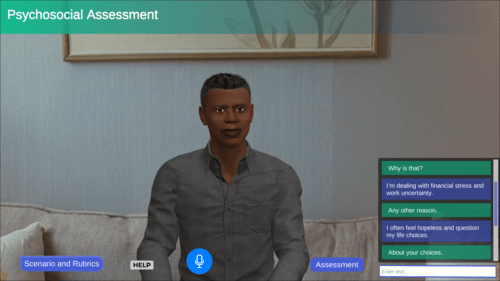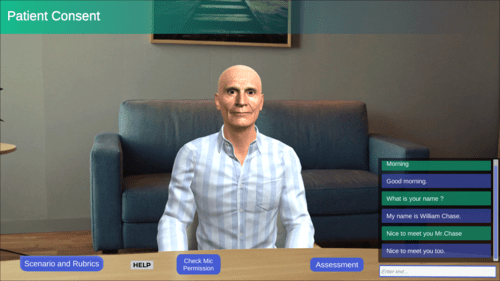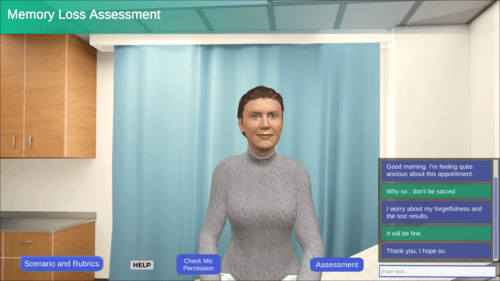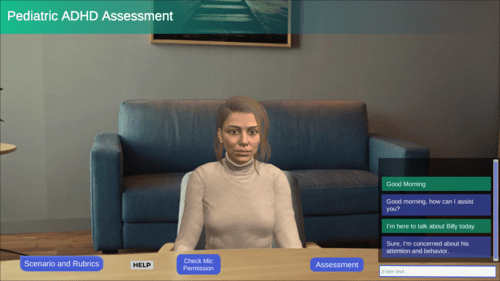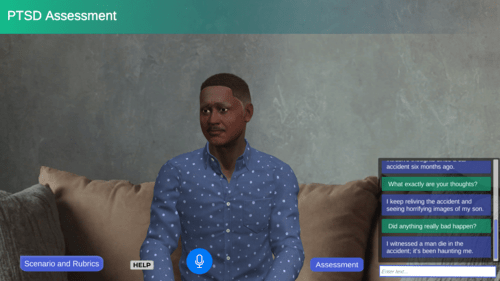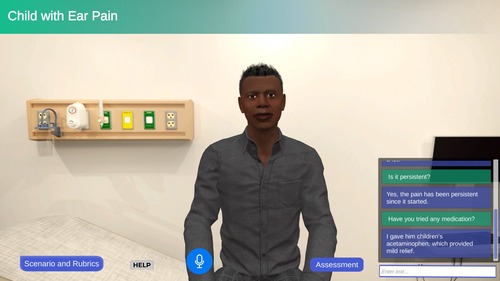World's Largest XR Healthcare Simulation Library
- All
- Essentials Collection
- Head-to-toe Assessment
- Emergency Collection
- Critical Care Collection
- Oncology Collection
- Airway Management Collection
- Regional Anesthesia
- Medication Administration
- Tactical Combat Casualty Care
- Pediatric Collection
- Mental Health Treatment
- Perinatal Collection
- Air Paramedic
- EMS Collection
- Patient Assessment
- Surgical Collection
- Environmental Services
- Allied Healthcare
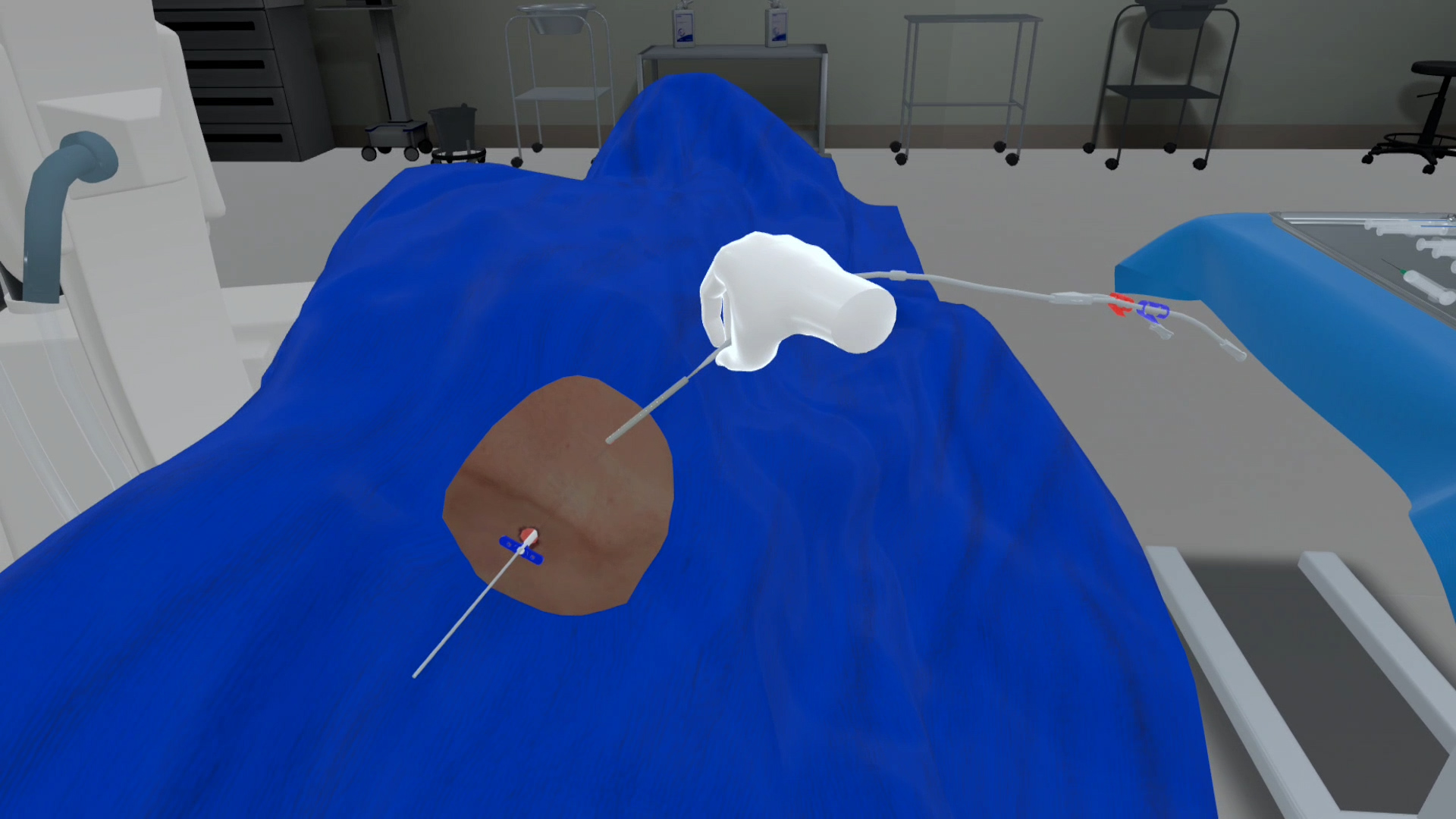
Tunneled Vascular Access Placement
Michael Carter, 58, is scheduled for a tunneled vascular access catheter placement. Learners will perform, sterile setup, venous access under ultrasound, wire advancement, tunneling, and post-placement verification.
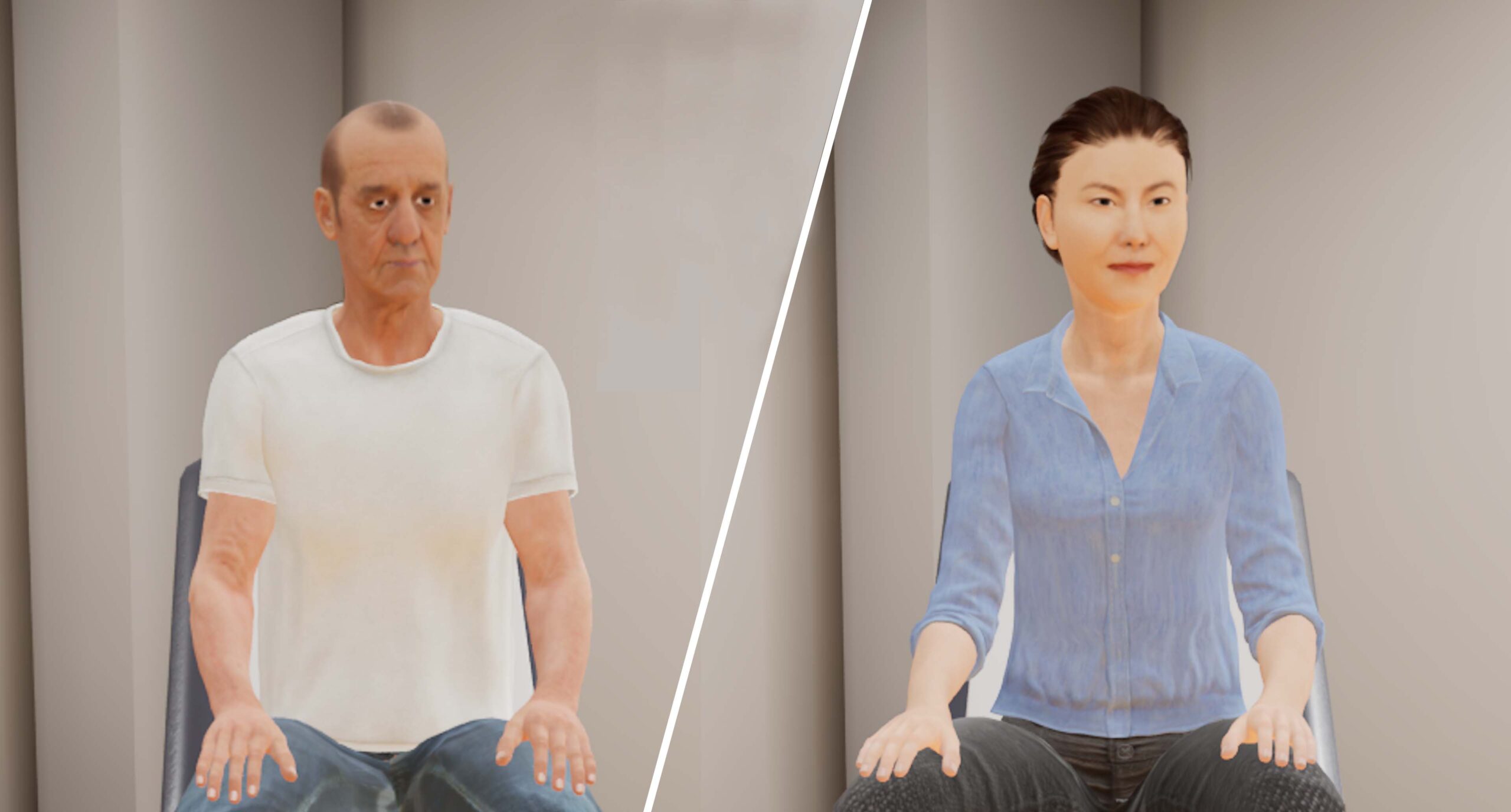
Urine Midstream Collection
Mei-Xia Chen and Carlos Martinez are scheduled for a urinalysis. You need to ensure that the test are performed accurately, efficiently, and under strict hygienic conditions to maintain sample integrity and safeguard patient health.
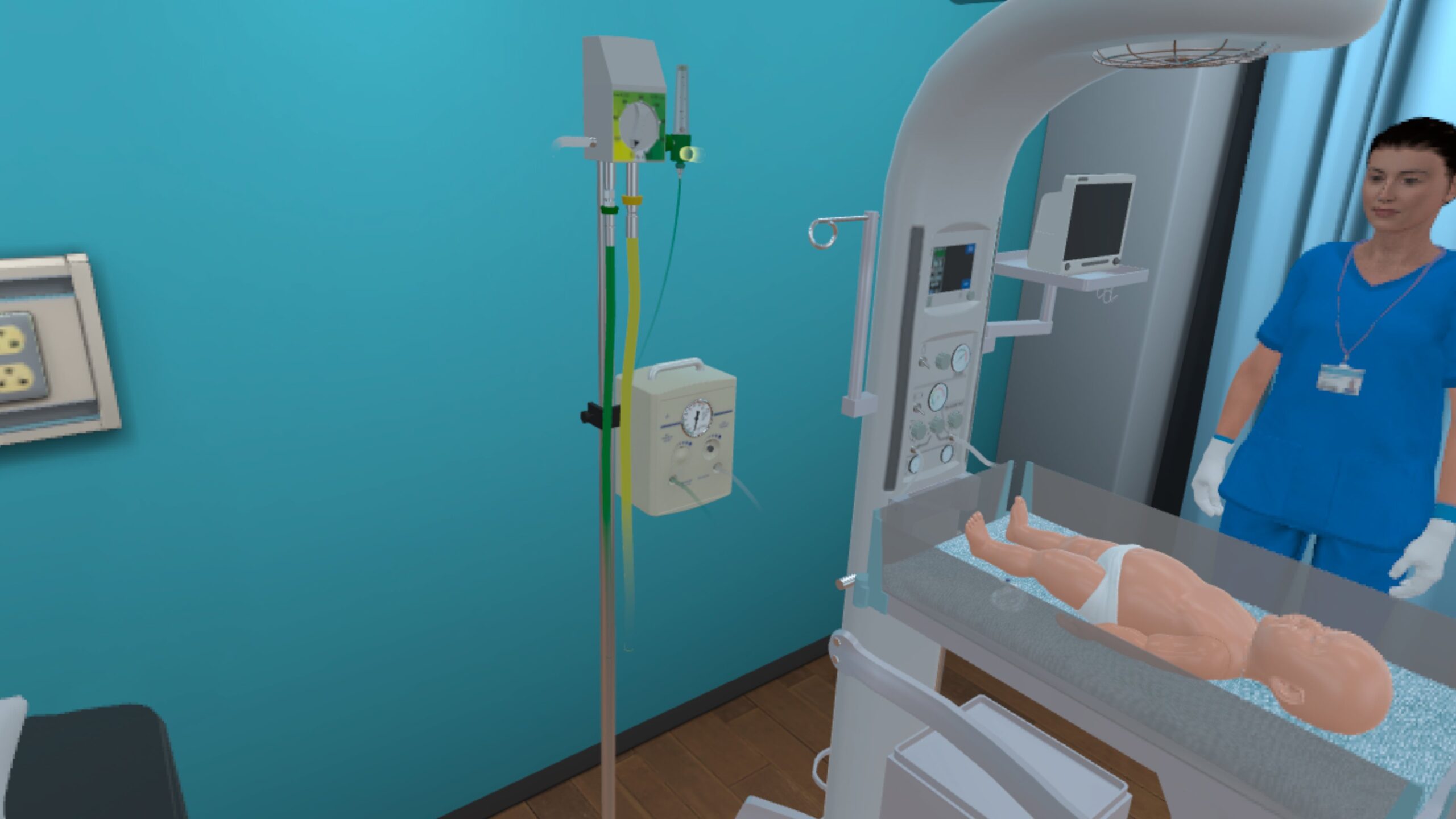
NRP Equipment Review
This simulation is designed to provide hands-on experience in using essential NRP equipment, ensuring healthcare providers exhibit knowledge of appropriate use of all items needed in neonatal emergencies.
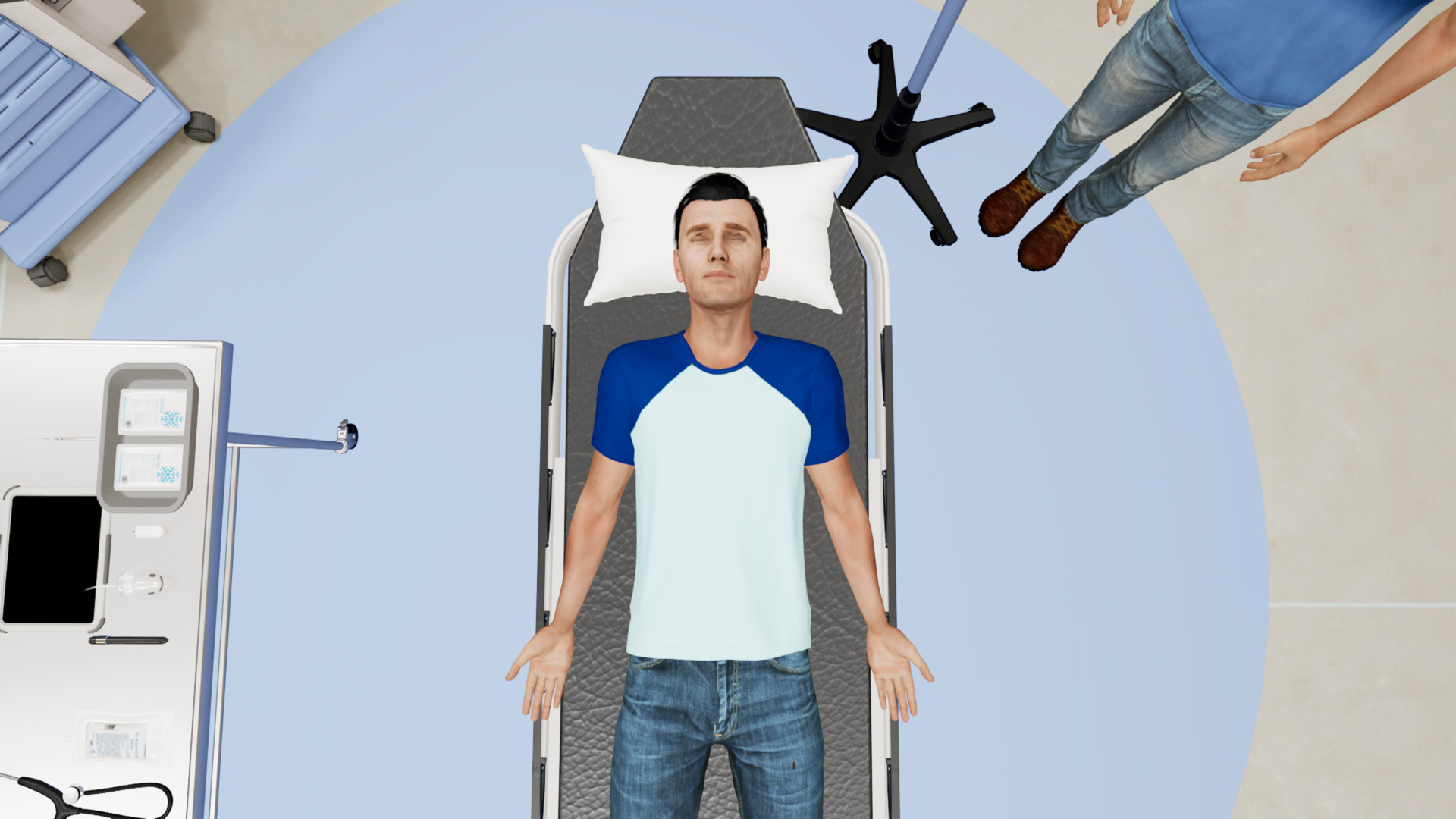
Heat Stroke with Altered Mental Status
James Smith, a 40-year-old landscaper, presents with heat stroke and altered mental state. Recognize the signs and symptoms of a heat related emergency and initiate aggressive cooling interventions.
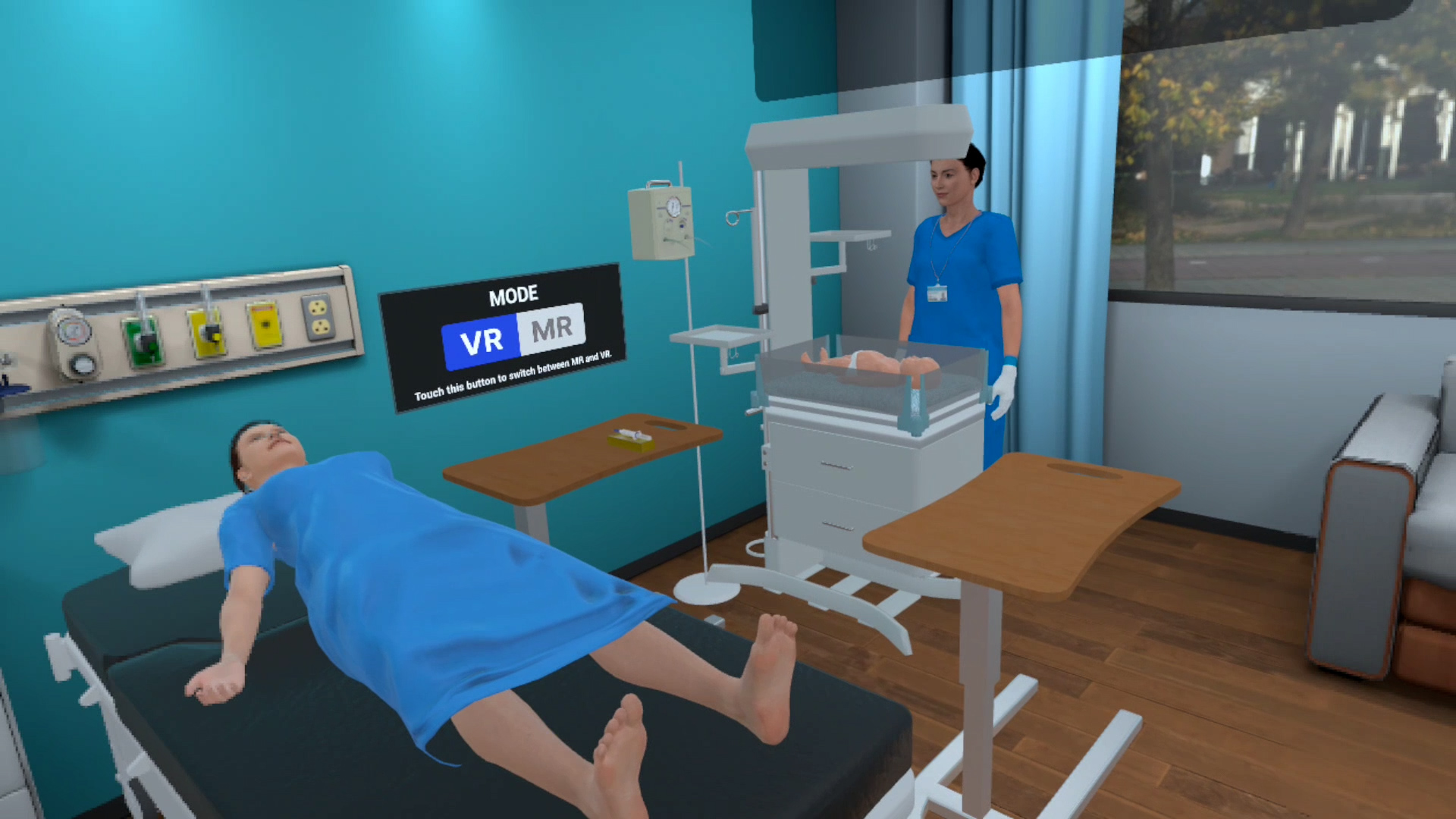
Introduction to NRP Equipment
The Introduction to NRP Equipment simulation provides a structured walkthrough of resuscitation equipment helping learners practice inspect, assemble, and identify the purpose of each device in preparation for neonatal emergencies.
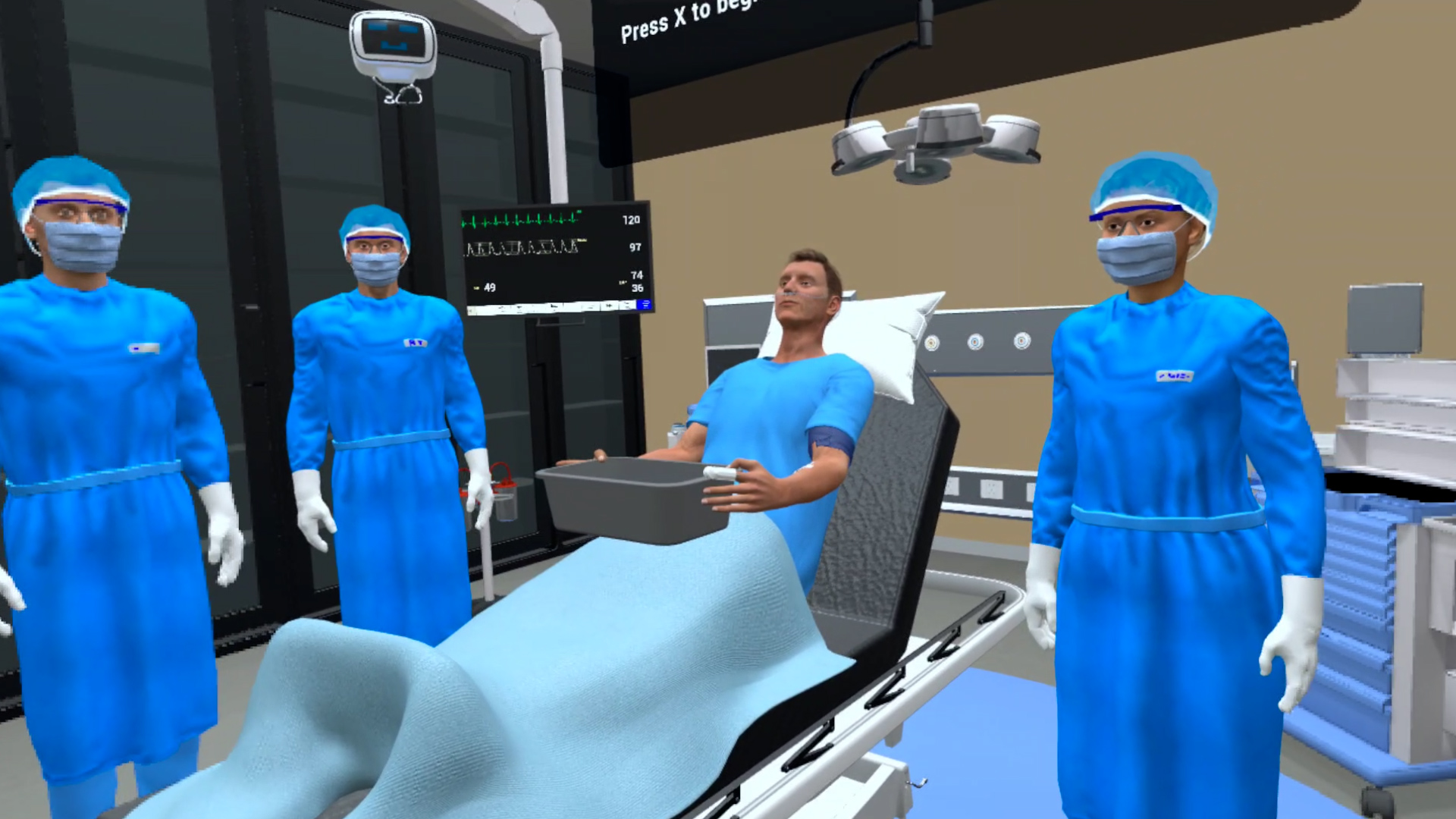
Rapid Blood Transfusion
Richard Mauk, 52-year-old male, is an alcoholic and has been throwing up blood for the past one hour. In this realistic VR simulation, practice rapid blood transfusion using a Belmont Rapid Infuser.

Urinary Catheter Insertion – Male
Seventy-year-old James Smith’s doctor has ordered a urinary catheter insertion. There is a need to adjust James’ Lasix medication which requires an accurate urine output, hence the procedure.

Air Ambulance – Hemorrhagic Stroke
Jason, 35-year-old male has had a headache for four days. He abruptly develops vision problems, goes unresponsive and starts seizing. On arrival EMS find Jason’s condition to be critical, prompting activation of an air ambulance for rapid transport to hospital.
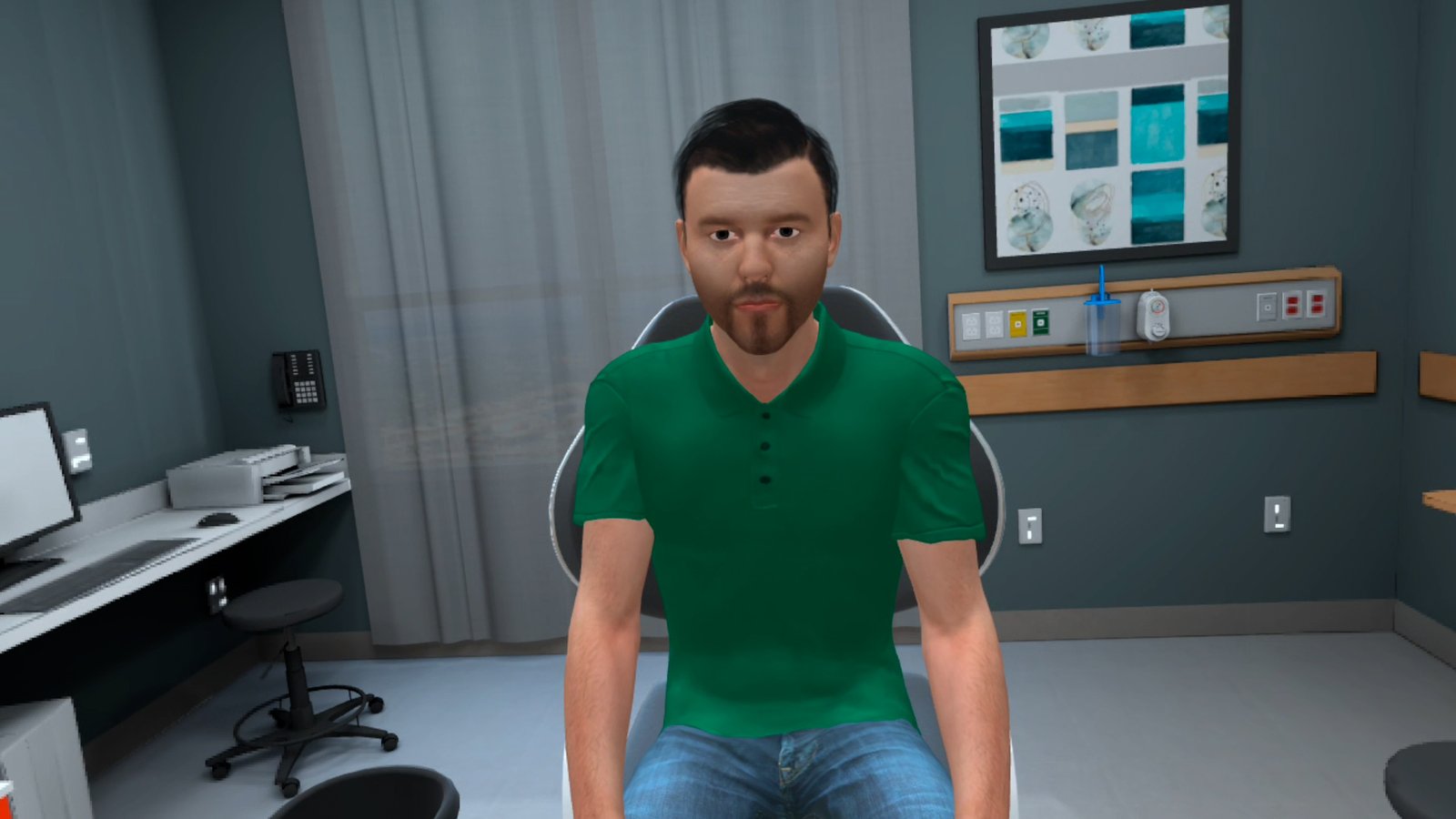
Peritonsillar Abscess Needle Aspiration
Marcus Smith, a 26-year-old male, presents with a unilateral sore throat, fever, muffled ‘hot potato’ voice, trismus, and uvular deviation away from the affected side—findings suggestive of a peritonsillar abscess.

Urine Midstream Collection
Mei-Xia Chen and Carlos Martinez are scheduled for a urinalysis. You need to ensure that the test are performed accurately, efficiently, and under strict hygienic conditions to maintain sample integrity and safeguard patient health.
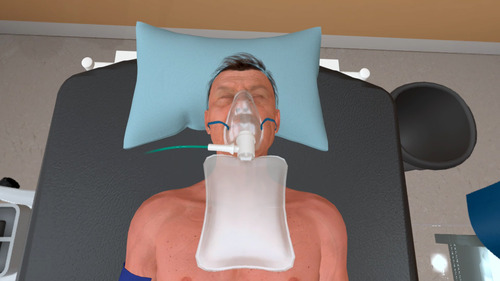
Bedside Pericardiocentesis
Jonas, a 64-year-old male, presents with hemodynamic instability requiring emergent bedside pericardiocentesis. This simulation provides practice in ultrasound-guided parasternal long approach using a standard central line kit.
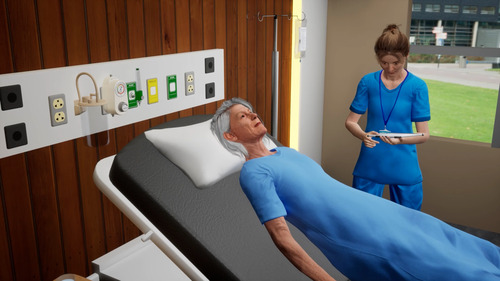
De-escalation – Dementia
Mrs. Evelyn Carter, 82-year-old female, with moderate dementia is admitted for a right hip fracture repair. Though initially cooperative, she became increasingly agitated due to Sundown Syndrome calling for de-escalation techniques.
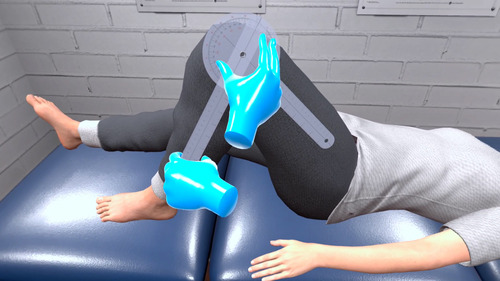
Goniometry – Physical Therapy
Thirty-year-old Sydney Smith is recovering from an accident and has been undergoing physical therapy. Couple of weeks into the sessions, Sydney is here for a Goniometry assessment to gauge the extent of her recovery.
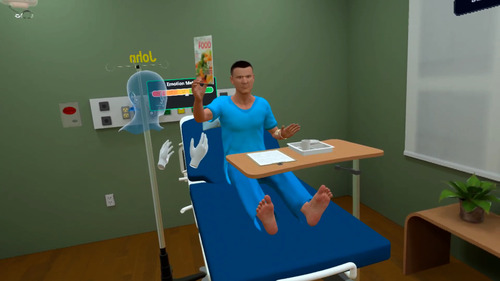
Extreme Anger (Abdominal Pain De-escalation)
John Smith is suffering severe abdominal pain and has been waiting in the emergency department for a very long time. With no one attending to him, his anger and frustration have escalated, and de-escalation techniques are needed as he yells and throws objects.
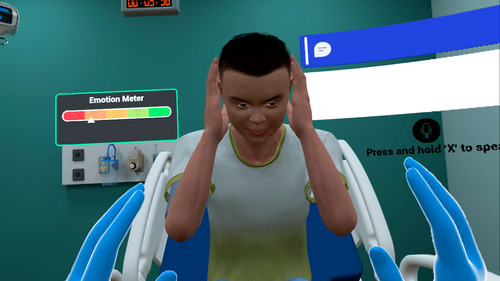
ASD Patient (Conflict Management)
Sam Turner is a 16-year-old with autism spectrum disorder (ASD). He has undergone an appendectomy and is now recovering. Unfamiliar surroundings and disruption in routine cause him anxiety. Practice de-escalation techniques to manage the situation.

Autism De-escalation
Seventeen-year-old Alex Johnson has autism spectrum disorder (ASD). When he fell from his bike he sprained his wrist, requiring a splint. The unfamiliar emergency department at the hospital causes Alex to get anxious and overwhelmed. Verbal de-escalation must be applied to calm him.

Verbal De-escalation (Calm to Angry)
When the nurse approaches to change Mrs Jane Davis’ bandage, she accidently brushed against the incision site. Though usually calm, Mrs. Davis is infuriated by the pain it caused, gets abusive with the nurse and refuses to have her dressing changed. Apply verbal de-escalation to control the situation.
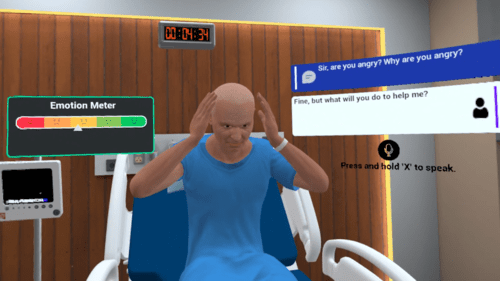
Verbal De-escalation
Robert Johnson is on oxygen therapy as he was experiencing increased shortness of breath. When the nurse approaches him, he is agitated and starts shouting, making it difficult to check his vitals or administer medication.

Multipatient Morning Shift
Your are the morning shift nurse taking over from the off-going nurse. Three patients need to be taken care of; each one with a different diagnosis. Ask proper questions to understand their health conditions and complete all morning tasks on time.
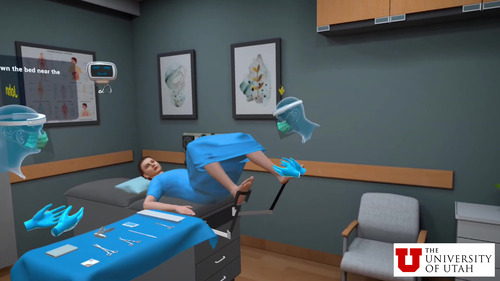
IUD Insertion – Liletta
Stephanie Cruz, 31-year-old female, is here to get an IUD insertion. An IUD or intrauterine device is an effective contraceptive chosen by many women.
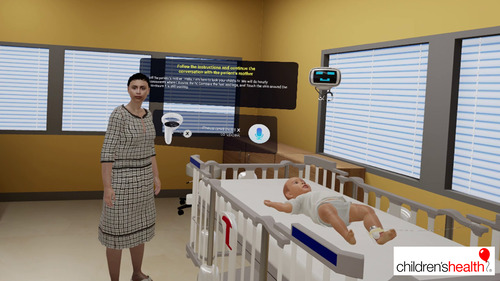
IV Infiltration
You are a nurse in the pediatric department and have to place an IV in a five-month old baby boy. IV insertions in infants can be difficult and may lead to complications like infiltration and extravasation.
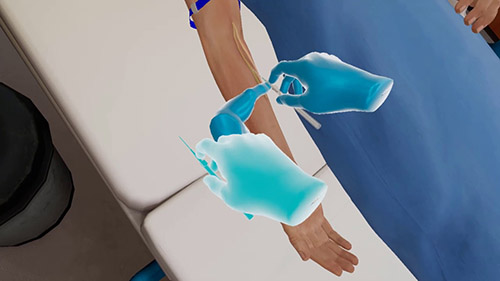
IV Insertion and Removal
Clark, a 51-year-old male, requires an IV insertion as a pre-operative measure. As a nurse, your job is to place the IV correctly and as painlessly as possible. You will also have to remove the IV at the end of the treatment.
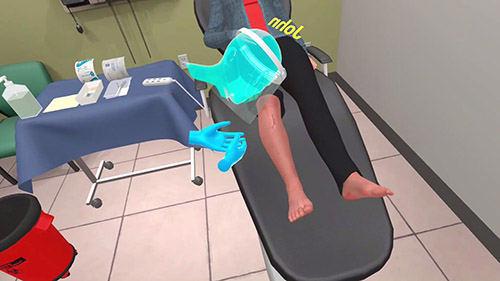
Staple Removal
Jennifer Brown is visiting the physician’s office for a staple removal procedure ten days after she had an excision of squamous cell carcinoma. The incision is three inches long with seven staples on the right lower leg.
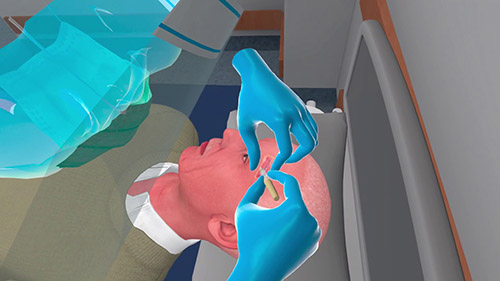
Skin Adhesive Placement
Robert Garcia is a 57-year old male who has suffered a laceration on his forehead. He is waiting for a skin adhesive placement procedure.
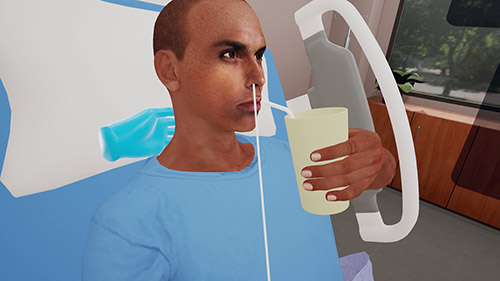
NG Tube Insertion
Jason, a 45-year-old male has recently undergone an abdominal surgery. As a postoperative procedure, his doctor has suggested an NG tube insertion to administer medication and nutrients, and facilitate gastric lavage.
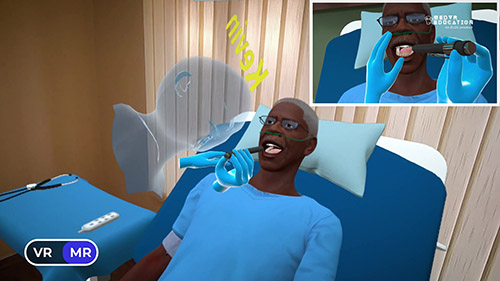
Patient Rounding
Edward Brown is 71 years old. His medical history shows congestive heart failure, hypertension, diabetes mellitus type 2, GERD, and hepatitis C. During a patient rounding, it is essential to ask him the correct questions.
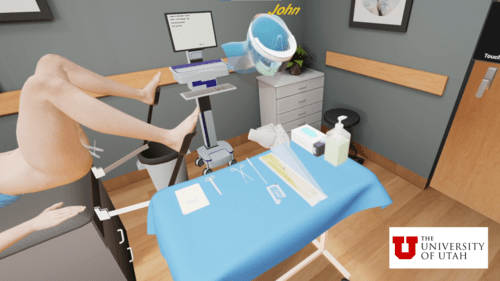
IUD Insertion – ParaGard
Stephanie Cruz is 31 years old and is here for a ParaGard insertion. ParaGard IUD insertion is a copper IUD that can prevent pregnancy for up to 10 years and is a preferred means of birth control by many women.
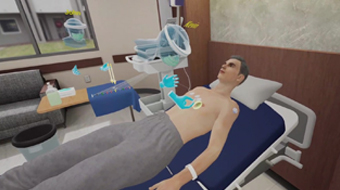
EKG
Thirty-eight-year-old Paul Anderson requires an EKG examination. To ensure a correct reading, leads and electrodes will have to be placed in precise locations.
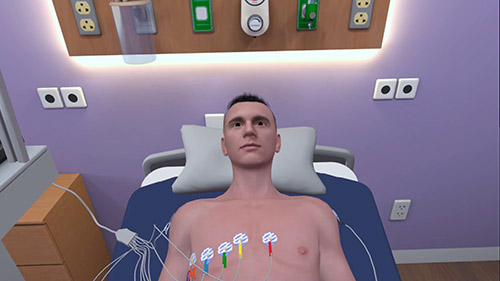
Right Sided EKG
Jacob Jones is 34 years old and he has a right sided myocardial infarction. Jacob’s heart, unlike most people, is positioned on the right side of his chest. Due to this condition, he needs a right sided EKG examination.
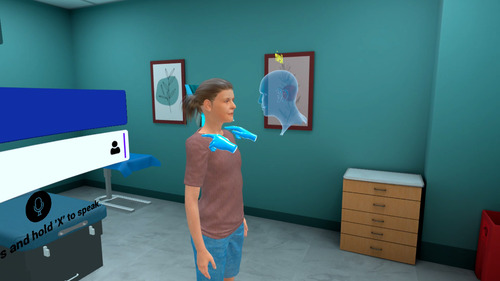
Jaw and Shoulder Assessment
Seventy-year-old Susan is undergoing a comprehensive musculoskeletal assessment, including a detailed jaw and shoulder evaluation to identify potential underlying issues.
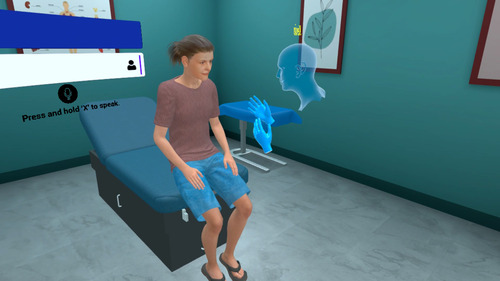
Spine and Neck Assessment
Susan Smith, a 70-year-old woman is visiting her healthcare provider for a comprehensive musculoskeletal assessment which includes a thorough spine and neck assessment to assess her condition and determine any underlying issues.
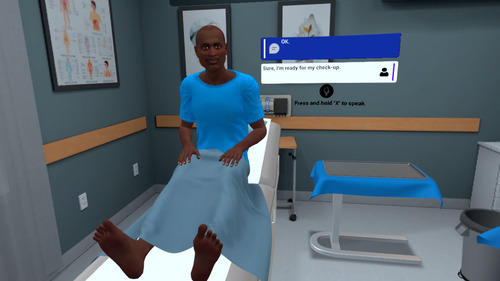
Rectal and Prostate Exam
Marcus Walker, 56, is visiting his doctor for a routine health check-up, which includes a rectal and prostate exam. The procedure involves identifying and noting any abnormalities or lesions.
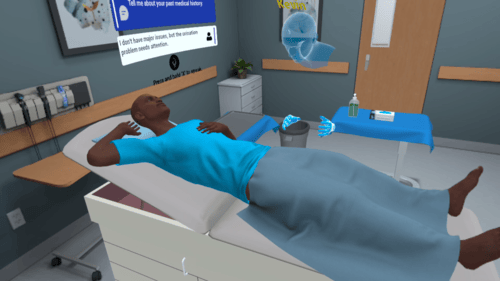
Inguinal Node Exam
Marcus Walker, a 56-year-old male, is visiting his doctor for a routine health check-up. During this session, he will undergo an inguinal node exam which is an essential procedure for evaluating lymphatic health.
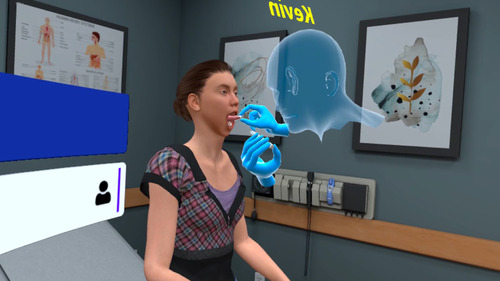
Mouth and Throat Assessment
Sophia Williams is visiting her family medicine doctor for a routine mouth and throat assessment. This assessment will include an inspection of the oral cavity, the lymph nodes and thyroids.
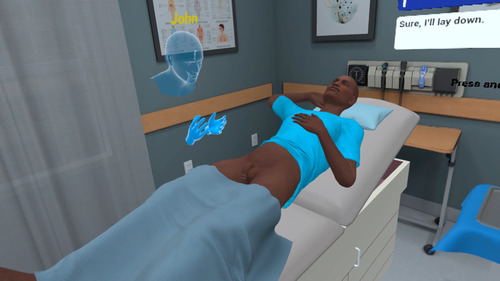
Hernia Examination
Fifty-six-year-old Marcus Walker is visiting his doctor for a routine health check-up. As part of this procedure, he will also undergo an examination that will involve determining the presence or absence of an inguinal hernia.
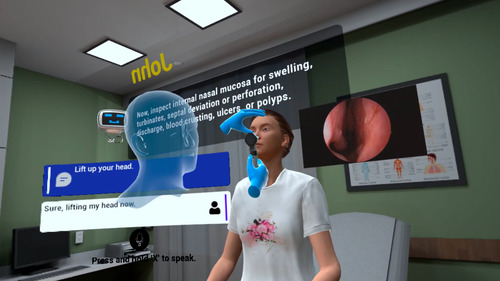
Nose Assessment
Sophia Williams is 30 years old. She is visiting her family medicine doctor for a routine nose assessment. Her assessment will consist of an inspection of the nose, an assessment of the nasal airflow and the sinuses.

Male Genitourinary Assessment
Fifty-six year old Marcus Walker is visiting his doctor for a genitourinary assessment. He has been experiencing difficulty with urination and needs to undergo an assessment to determine the cause of his discomfort.
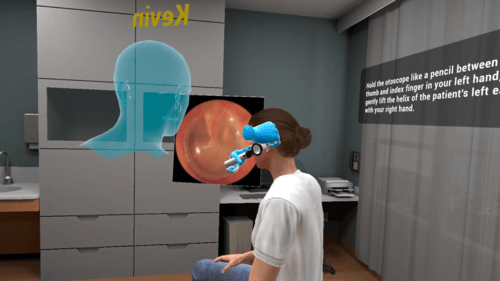
Ear Assessment
Sophia Williams is visiting her family medicine doctor for a routine ear assessment. Her ear assessment will include an inspection of the auricle followed by the Whisper, Weber and Rinne tests and an Otoscope exam.
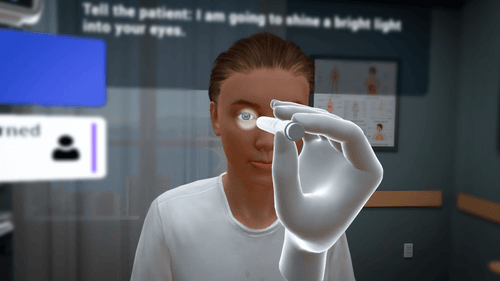
Eye Assessment
Thirty-year-old Sophia Williams is experiencing a lot of pressure behind her eyes and her throat is feeling raw. She has come in for an eye assessment. The assessment consists of performing tests for peripheral vision, pupillary movement, and a funduscopic examination.

Abdominal Assessment
Thirty-four-year-old Brenda Herring is at the hospital for an abdominal assessment. She is overweight and has recently been diagnosed with type II diabetes.
Learners will be using the techniques of inspecting, auscultating, percussing and palpating to perform a thorough assessment.
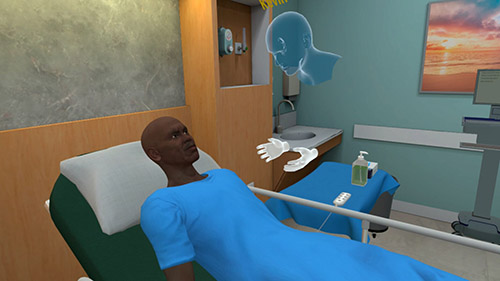
Respiratory Function Assessment
Fifty-one-year-old Henry Joseph has been experiencing shortness of breath since the past two days. His respiration and chest movements need to assessed along with his anterior and posterior lung sounds.
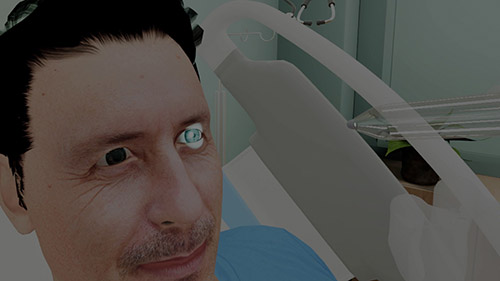
Neurological Assessment
Mike is a 42-year-old corporate executive. He is having an outpatient surgery procedure. As a routine procedure, prior to the surgery, the outpatient surgery nurse must perform a neurological assessment.
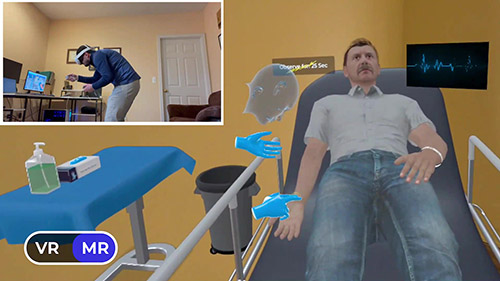
Radial Pulse
Marcus Johnson, 53-year-old male, is in the emergency room for a checkup as he was feeling short of breath. As a preliminary checkup procedure, his radial pulse will have to be read.

Apical Pulse Assessment
Sixty-three-year-old Mr. Parsons has been experiencing shortness of breath for the past couple of days. He has also been experiencing a ‘fluttering feeling’ in his chest. Mr. Parsons is here for a check-up about his problem.
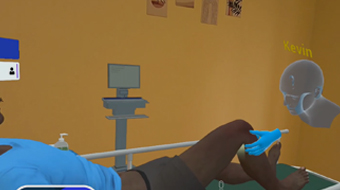
Lower Extremity Pulses
Marcus Johnson is 53 years old. Since two days, he has been experiencing shortness of breath, a fluttering feeling in his chest and swelling in his legs. His symptoms call for an assessment of his lower extremity pulses.

Heat Stroke with Altered Mental Status
James Smith, a 40-year-old landscaper, presents with heat stroke and altered mental state. Recognize the signs and symptoms of a heat related emergency and initiate aggressive cooling interventions.

Rapid Blood Transfusion
Richard Mauk, 52-year-old male, is an alcoholic and has been throwing up blood for the past one hour. In this realistic VR simulation, practice rapid blood transfusion using a Belmont Rapid Infuser.

Alcohol Withdrawal Seizure
Marcus Whittle, a 67-year-old male, was admitted overnight, intoxicated with unremarkable vital signs. He is also suffering from severe hypertension. Learners train to diagnose alcohol withdrawal seizures and develop and communicate an effective contingency plan.

Cardiac Tamponade
Mark Johnson, a 67-year-old male patient diagnosed with lung cancer, is presented with hypotension and shortness of breath. Clinical assessment reveals a large malignant pericardial effusion resulting in cardiac tamponade.

Cardiogenic Shock
Steve Carell, 56-year-old male, with ischemic cardiomyopathy and CAD, presents with dyspnea and mild hypoxemia. Shortly after admission, he develops lethargy and tachycardia, with exam and lab findings concerning for cardiogenic shock.

Suprapubic Tube Exchange
70-year-old Richard Warner is visiting his healthcare provider for a routine suprapubic tube exchange procedure. This VR simulation is designed to help practitioners practice the procedure in a virtual environment with a virtual patient.
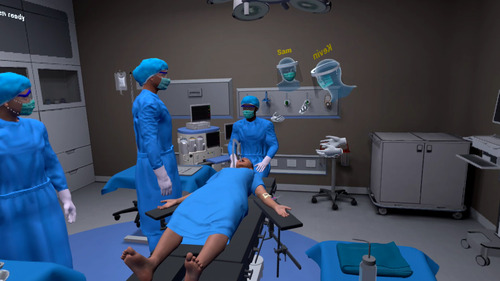
Fire in Operating Room
Fifty-two-year-old Jane Dopple is prepped for a thyroidectomy involving the use of an electrocautery. When small fire ignites on the surgical drape near the incision site, the team must respond to ensure the safety of the patient and the staff.
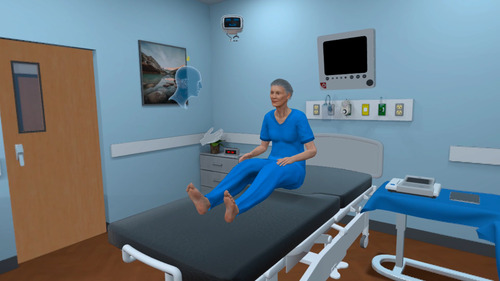
Atrial Fibrillation with RVR
Sixty-five-year-old Susan Gardner is presented to ED for chest pain and shortness of breath. She was discharged from the ED when symptoms improved but 10 minutes later she complained of increased chest pressure.
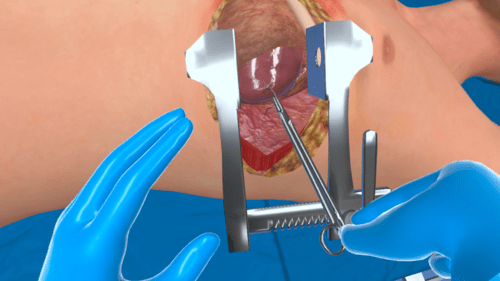
ED Thoracotomy
A 26-year-old male is brought to the trauma room with a single stab wound to his cardiac box. He has been intubated by the paramedic team. ED thoracotomy will have to be performed to gain access to the heart and suture the wound.
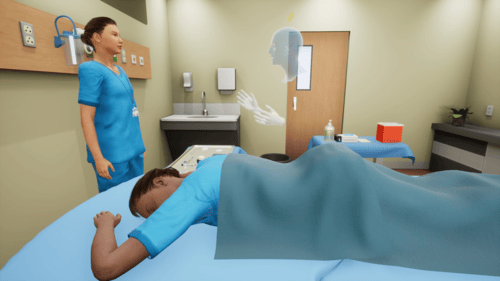
Pilonidal Abscess Removal
A 29-year-old patient is visiting for a pilonidal abscess removal. She has got an abscess on her upper right buttock and has been given conscious sedation to perform the procedure. Practice the procedure from preoperative protocols to postoperative dressing in a risk-free environment.
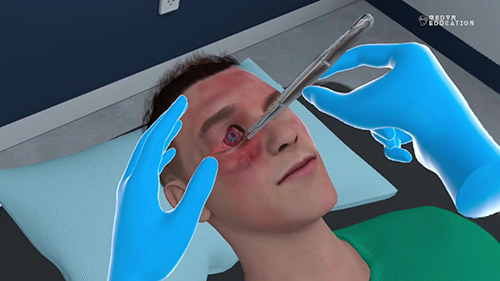
Lateral Canthotomy
Marvin Jones, 21-years-old, was involved in a motor vehicle collision. He has suffered blunt force and facial injuries. You need to check the IOP using a tonometer, and if required, perform a lateral canthotomy.
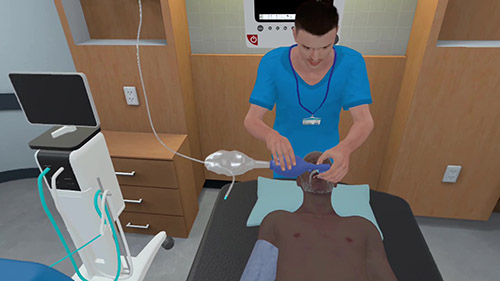
Crashing on a Ventilator
This unconscious patient has recently been intubated and is on ventilator. You suddenly notice his blood pressure and oxygen level plummeting. You need to act fast as the patient is crashing on the ventilator.
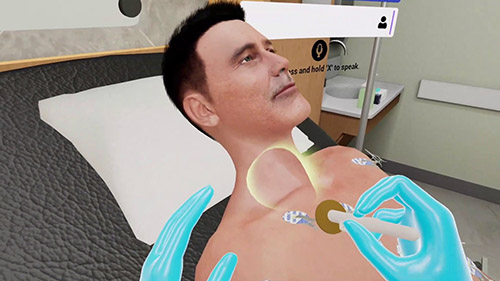
Beta Blocker Toxicity
Shawn, a 50-year-old male, has impulsively taken the entire bottle of metoprolol. The estimated ingestion is of 100 x 50 mg tablets (5000 mg) approximately 45 minutes prior to presentation.
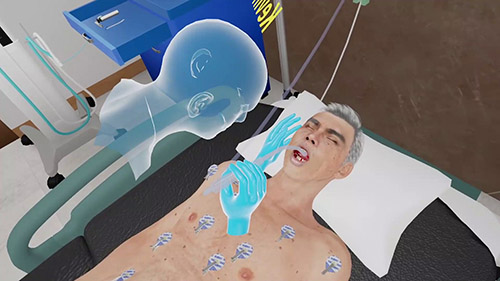
Massive Hemoptysis
Akito Tanaka, a 63-year-old male, is brought into the emergency department with symptoms consistent with COPD exacerbation. He has a former smoking history, COPD on home O2, and is on anticoagulation for atrial fibrillation.

Aortic Dissection
Antonio Garcia, 49 years old, and has chest pain and abdominal pain. Symptoms started 2 hours ago with abdominal pain that was sudden in onset, diffuse, crampy, 10 on 10. This then travelled up into his chest.
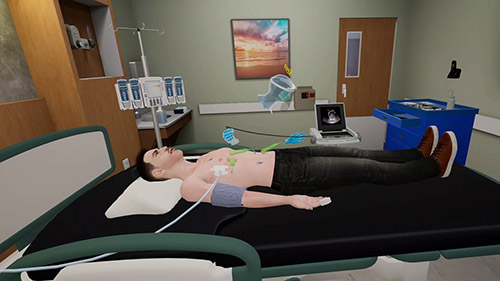
MVC with Tension Pneumothorax
James Anderson, 40 years old, was the driver in a single vehicle collision at highway speed. He has an obvious open fracture of his left forearm and decreased air entry to the right of his chest.
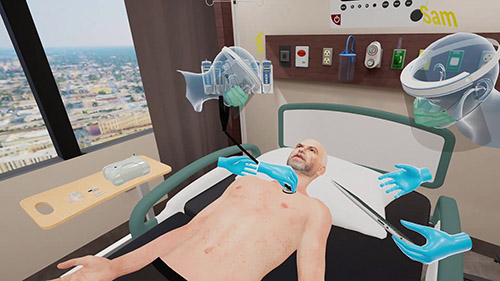
Anaphylaxis
Kevin Shaw, 65-year-old, has developed a rash and nausea shortly after starting an IV dose of tazocin. Kevin was admitted for treatment of a diabetic foot infection that has been progressing despite oral antibiotics.
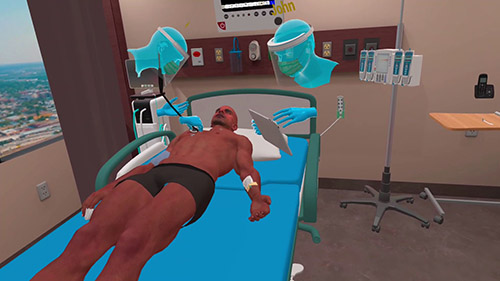
Subarachnoid Hemorrhage
Joseph Taylor, 50 years old, while lifting weights at the gym, complained of a sudden headache and soon fell to the ground. He’s suffered an aneurysmal subarachnoid hemorrhage (SAH).
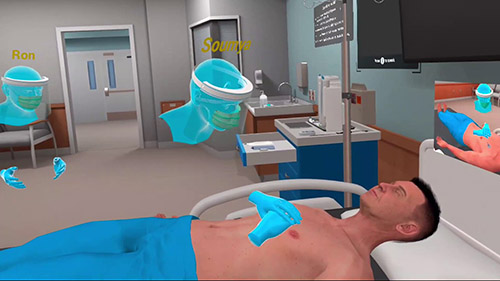
Hyperkalemia
Doug Smith, 62-year-old male, was awaiting discharge but was noted to be hypokalemic on labs. Due to clerical error he has been administered 10 times the recommended dose of KCl 10mEq in 100cc NS bolus.
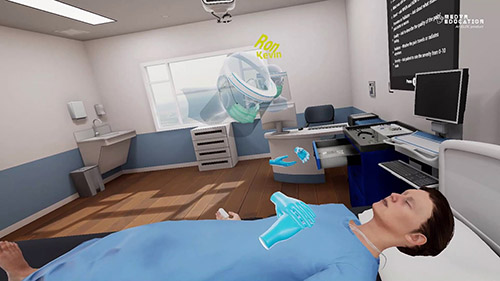
Pulmonary Embolism
Joanne Black is diagnosed with ovarian cancer and is receiving chemotherapy. Surgery is planned for the next day. Around 4 hours after blood transfusion she started developing shortness of breath and central chest discomfort.
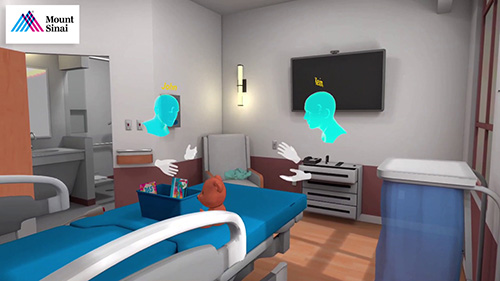
Patient Safety – Room Preparation
You have been entrusted with the task to prepare a patient room for a patient at risk for self-harm. Review the room environment and ensure that all objects of potential risk are removed or placed in inaccessible locations.
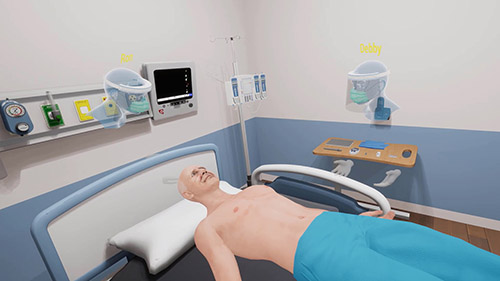
Seizure
John Wright, 67-year-old male, has suffered a generalized seizure. Initially, he appears somnolent and cannot respond to questions. His respirations are sonorous and although his airway seems patent, there is blood in his mouth.
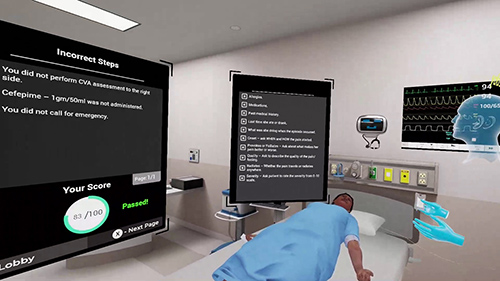
Urologic Sepsis
Stephanie, a 59 year old female, has a worsening left flank pain, nausea, and decreased PO intake. She has a 7-day history of dysuria, urinary frequency, and fever preceded by an intermittent left flank pain.
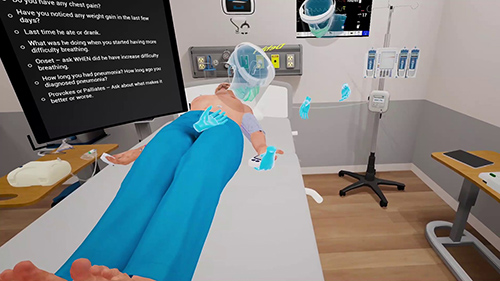
Pneumonia
Jim Smith, 64 years old male, was admitted 3 days ago. He has difficulty breathing and an increasing productive cough. Jim has been diagnosed with a community acquired pneumonia and started on Moxifloxacin 400mg IV daily.
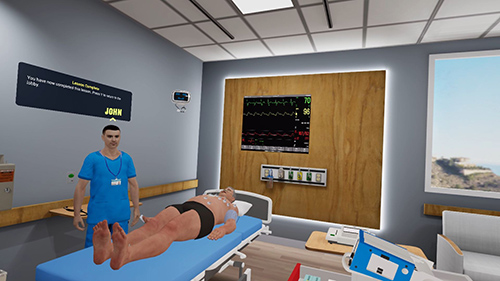
Bradycardia
A middle-aged patient is feeling dizzy and weak the team must perform an assessment using SAMPLE and OPQRST. Recognizing a heart block, they should ensure IV access, prepare, and perform pacing before calling for cardiology.
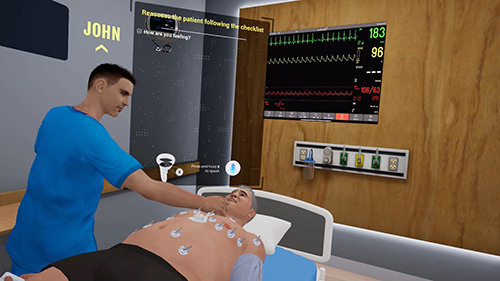
Tachycardia
A 54-year old male with ventricular tachycardia needs to be assessed using SAMPLE and OPQRST. The learner must recognize the rhythm and institute appropriate work-up and management including electrical cardioversion.

Cardiac Arrest
When a 54-year-old man is found to be unresponsive, the respondent will have to call for help and perform initial assessment. The team members will prepare the patient for CPR and administer appropriate medication.
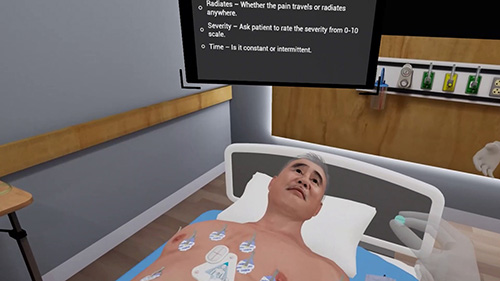
ST Elevation Myocardial Infarction
A 54-year old male is suffering a chest pain. An EKG must be performed as this could be a case of ST elevation myocardial infarction. Subsequently proper medication must be given and interventional cardiology team activated.

IV Insertion and Removal
Clark, a 51-year-old male, requires an IV insertion as a pre-operative measure. As a nurse, your job is to place the IV correctly and as painlessly as possible. You will also have to remove the IV at the end of the treatment.

Staple Removal
Jennifer Brown is visiting the physician’s office for a staple removal procedure ten days after she had an excision of squamous cell carcinoma. The incision is three inches long with seven staples on the right lower leg.

Skin Adhesive Placement
Robert Garcia is a 57-year old male who has suffered a laceration on his forehead. He is waiting for a skin adhesive placement procedure.

NG Tube Insertion
Jason, a 45-year-old male has recently undergone an abdominal surgery. As a postoperative procedure, his doctor has suggested an NG tube insertion to administer medication and nutrients, and facilitate gastric lavage.

EKG
Thirty-eight-year-old Paul Anderson requires an EKG examination. To ensure a correct reading, leads and electrodes will have to be placed in precise locations.

Tunneled Vascular Access Placement
Michael Carter, 58, is scheduled for a tunneled vascular access catheter placement. Learners will perform, sterile setup, venous access under ultrasound, wire advancement, tunneling, and post-placement verification.

Urinary Catheter Insertion – Male
Seventy-year-old James Smith’s doctor has ordered a urinary catheter insertion. There is a need to adjust James’ Lasix medication which requires an accurate urine output, hence the procedure.

Peritonsillar Abscess Needle Aspiration
Marcus Smith, a 26-year-old male, presents with a unilateral sore throat, fever, muffled ‘hot potato’ voice, trismus, and uvular deviation away from the affected side—findings suggestive of a peritonsillar abscess.

ED Thoracotomy
A 26-year-old male is brought to the trauma room with a single stab wound to his cardiac box. He has been intubated by the paramedic team. ED thoracotomy will have to be performed to gain access to the heart and suture the wound.

Pilonidal Abscess Removal
A 29-year-old patient is visiting for a pilonidal abscess removal. She has got an abscess on her upper right buttock and has been given conscious sedation to perform the procedure. Practice the procedure from preoperative protocols to postoperative dressing in a risk-free environment.
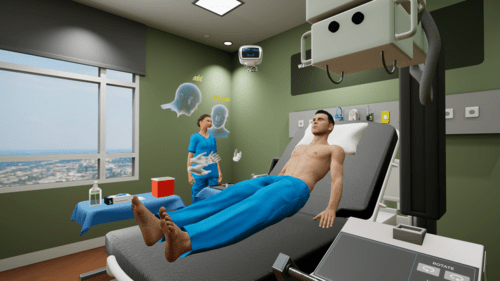
Thoracentesis
Thoracentesis refers to the procedure performed to aspirate fluid from the pleural space. This could be done for diagnostic or therapeutic purposes. In this given case, the patient has pneumothorax, calling for a thoracentesis procedure.
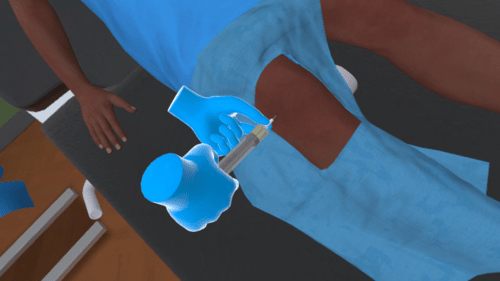
Knee Arthrocentesis
A 53-year-old male patient has suffering right-sided knee pain and swelling. This could be a case of gout or septic arthritis. Knee arthrocentesis is advised, a minor surgical procedure done to aspirate synovial fluid from the knee joint.

Paracentesis
Paracentesis refers to a body fluid sampling procedure in which a needle or catheter is inserted in the peritoneal cavity to obtain ascitic fluid. This could be for diagnostic or therapeutic purposes.
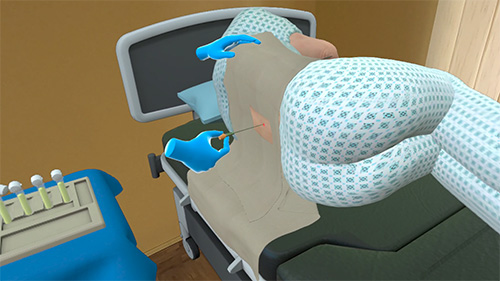
Lumbar Puncture
This could be a case of meningitis. To establish a definitive diagnosis a lumbar puncture procedure will be performed. It involves drawing cerebrospinal fluid from the spinal canal of the lower back region.
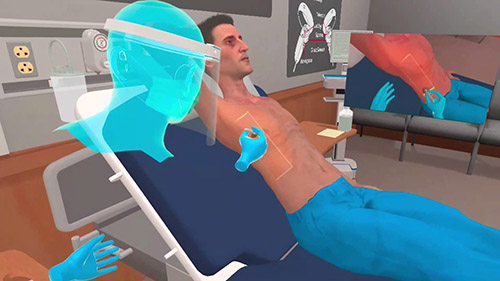
Chest Tube Insertion
Juan is a 48-year-old male who suffers shortness of breath and right-sided chest pain on inspiration. An x-ray was ordered that showed a right pneumothorax. The patient will need a chest tube insertion.
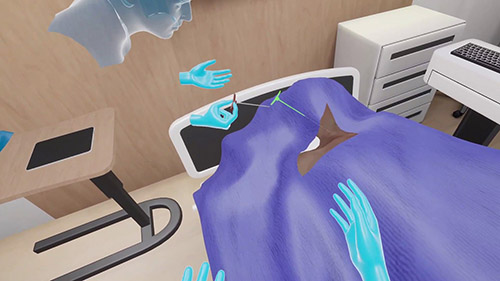
CVC Insertion – Advanced
Jacob, 52-year-old male patient, is admitted for an infection and has antibiotics ordered. IV access has been tried numerous times without success. The attending physician has ordered a central venous catheter placement.
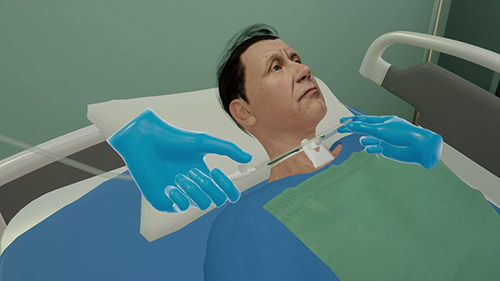
Tracheostomy Care
Fifty-seven-year-old Patrick has had to undergo a tracheostomy procedure due to an infection in his epiglottis. The success of the surgery largely depends upon the post-procedural care for which nurses need adequate training.
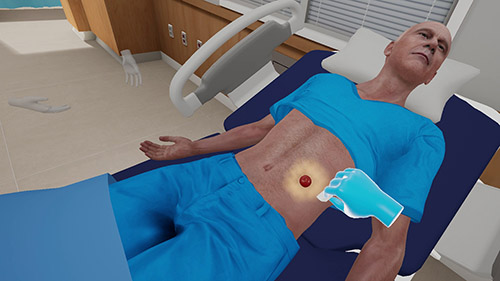
Colostomy Care
Caring for a colostomy patient includes tasks like emptying and changing the colostomy bag, cleaning the stoma, and applying adhesive wafer. All this has to be performed keeping in mind the comfort and safety of the patient.
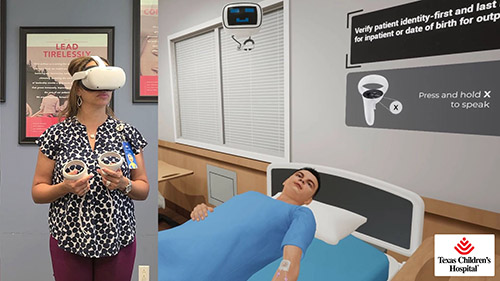
CLABSI Prevention
CLABSI is completely preventable if strict protocol is adhered to. With adequate training, healthcare professionals can adopt preventive measures at every step of an insertion procedure to maintain a CLABSI-free insertion.

PICC Removal
Performing a PICC removal in a virtually simulated environment with a virtual patient provides nurses practice in the procedure and helps them identify the nature of problems they may encounter in real-life scenarios.
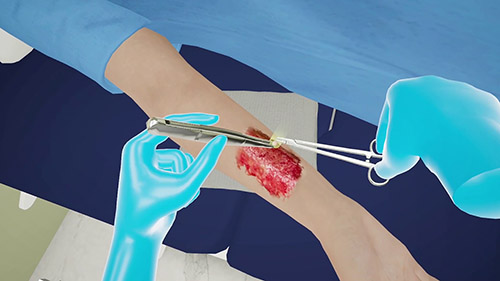
Burn Wound Care
Elizabeth Clark is a 38-year-old female who has suffered burn injury about a week back. Walking with a stock pot of hot Alfredo sauce, she accidentally hit her elbow against a rack and caused the sauce to splash onto her arm.
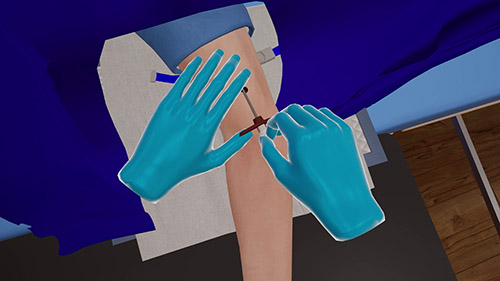
PICC Insertion
Peripherally Inserted Central Catheter (PICC) is an intravenous catheter guided through the vein to reach the tip of the superior vena cava, a vein that carries blood to the heart.

Bone Marrow Biopsy & Aspiration
For bone marrow aspiration, a small portion of fluid is withdrawn from the marrow using a Jamshidi aspiration needle. For biopsy, a small section of the solid marrow is extracted for medical examination purposes.
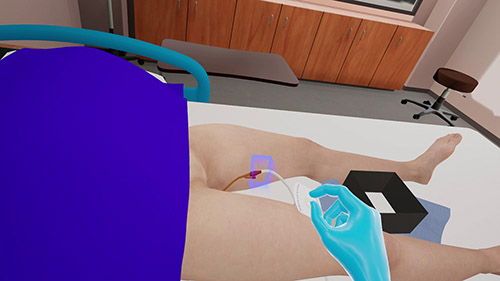
Foley Catheter Insertion – Female
Urinary catheterization is a core nursing procedure that involves introducing a thin, long, flexible sterile tube into a patient’s bladder through the urethra in order to drain urine.

CVC Insertion – Assistance
CV catheters are essential in treating several conditions and prove useful in obtaining information like right ventricular preload, cardiovascular status and fluid balance in patients.

Lateral Canthotomy
Marvin Jones, 21-years-old, was involved in a motor vehicle collision. He has suffered blunt force and facial injuries. You need to check the IOP using a tonometer, and if required, perform a lateral canthotomy.

IV Insertion and Removal
Clark, a 51-year-old male, requires an IV insertion as a pre-operative measure. As a nurse, your job is to place the IV correctly and as painlessly as possible. You will also have to remove the IV at the end of the treatment.

NG Tube Insertion
Jason, a 45-year-old male has recently undergone an abdominal surgery. As a postoperative procedure, his doctor has suggested an NG tube insertion to administer medication and nutrients, and facilitate gastric lavage.
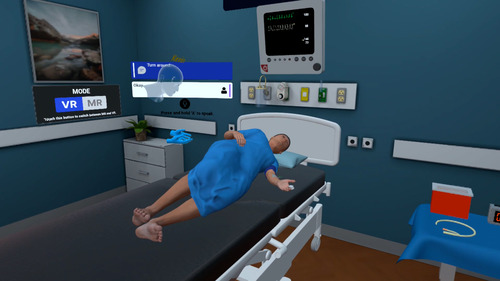
Cauda Equina Syndrome
Jane Smith, 65-year-old female, with metastatic breast cancer is presented with acute lower back pain and weakness in her lower extremities. Examinations indicate spinal metastases causing cauda equina syndrome.
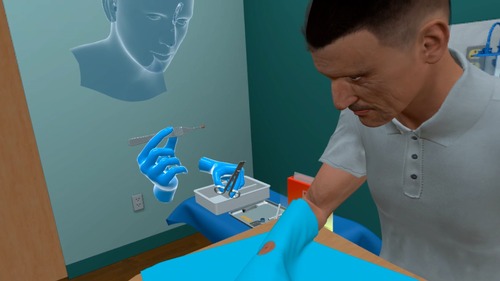
Punch Biopsy
Sixty-year-old John Spencer presents with a small but noticeable lesion on the right forearm, requiring a biopsy for comprehensive evaluation and diagnosis. Punch biopsy is the ideal method for this condition.
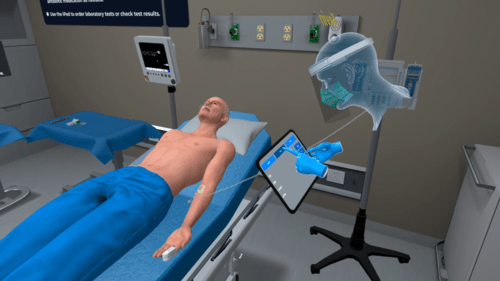
Febrile Neutropenia with Sepsis
John Simpson, 62-years-old, is a patient of lung cancer. He has been complaining of chills, weakness, and increased shortness of breath and appears pale and diaphoretic. This could be a case of febrile neutropenia and sepsis.
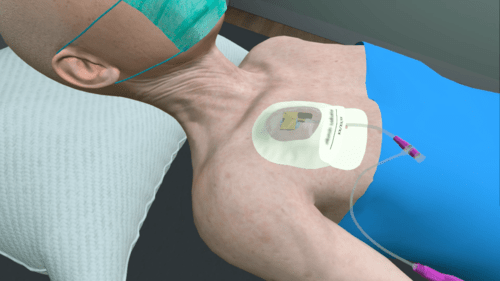
Implanted Port Access
An implanted port access is a procedure in which the healthcare provider accesses an implanted port to administer IV fluids or medication, in this case chemotherapy. The patient here is 60-year-old Karen Thompson who is on a chemo cycle.

Bone Marrow Biopsy & Aspiration
For bone marrow aspiration, a small portion of fluid is withdrawn from the marrow using a Jamshidi aspiration needle. For biopsy, a small section of the solid marrow is extracted for medical examination purposes.

Pulmonary Embolism
Joanne Black is diagnosed with ovarian cancer and is receiving chemotherapy. Surgery is planned for the next day. Around 4 hours after blood transfusion she started developing shortness of breath and central chest discomfort.

Difficult Airway
The patient is brought into emergency with a compromised airway. When intubation and supraglottic airway methods fail, cricothyroidotomy is performed to secure oxygenation and ventilation.
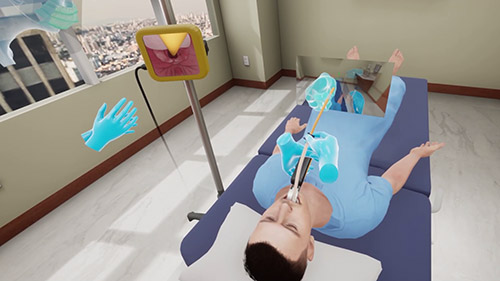
Bougie Intubation
Bougie intubation is performed to establish airway patency in patients with compromised airways. It involves inserting a Bougie into the glottis to facilitate insertion of an endotracheal tube.
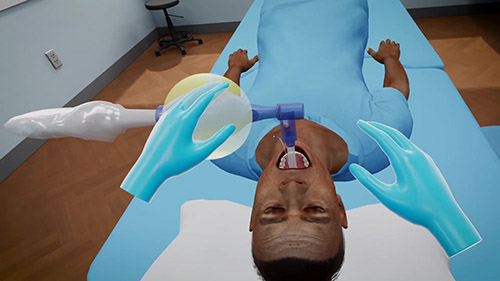
Supraglottic Airway
Supraglottic Airways are devices that are inserted into a patient’s pharynx to keep the upper airway open and facilitate unobstructed ventilation.

Nasal Airways
Nasal Airways or NPA are airway adjuncts inserted into an unconscious or minimally responsive patient’s nose to maintain airway patency. This is done to prevent the tongue from covering the epiglottis.
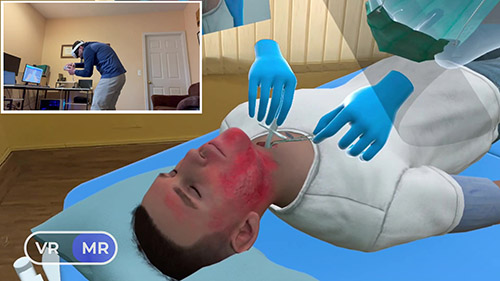
Surgical Airway
Surgical airway management or cricothyroidotomy is done to establish an airway in cases of extreme urgency to secure an airway. It is considered the quickest method to obtain a sub-laryngeal airway.
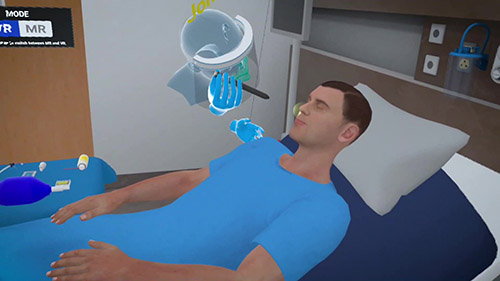
Fiberoptic Intubation
Fiberoptic intubation is employed towards establishing airway access in both anticipated and unanticipated difficult airways. A flexible endoscope is passed through the glottis with a tracheal tube loaded along its length.
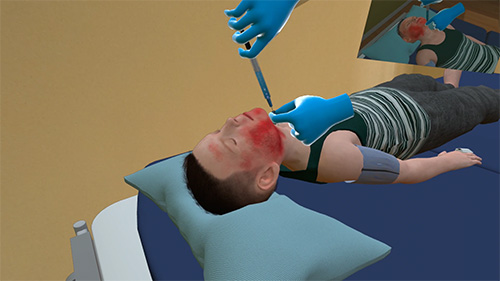
Needle Cricothyroidotomy
Needle Cricothyroidotomy is performed to oxygenate a patient in situations of severe hypoxia and respiratory failure. It involves passing a catheter through the cricothyroid membrane, using a catheter-over-needle device.
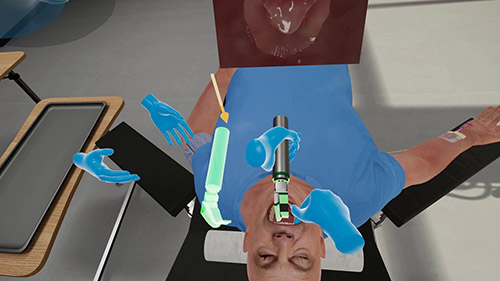
Endotracheal Intubation
Kevin is a 47-year-old male with a serious case of pneumonia. He has been admitted with breathing difficulty and must be intubated. This is a delicate process that involves passing a tube into a person’s airway.
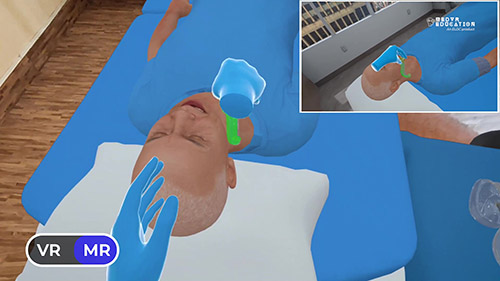
Oral Airway Insertion
Oral Airways or OPAs are airway adjuncts inserted into an unconscious or minimally responsive patient’s mouth. This is done to maintain airway patency by preventing the tongue from covering the epiglottis.
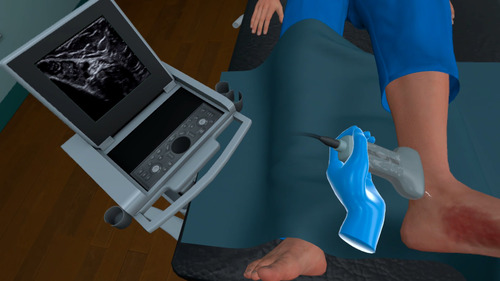
Posterior Tibial Nerve Block
Ethan Cole, a 28-year-old male, is presented with a large laceration to the bottom of the left foot. To facilitate effective and pain-free repair of the injury, a posterior tibial nerve block is indicated.

Greater Occipital Nerve Block
David Miller is a thirty-six-year-old male suffering from a headache. To help alleviate his pain, Greater Occipital Nerve Block has been suggested. Practice the procedure in a virtual environment to gain practice and confidence.
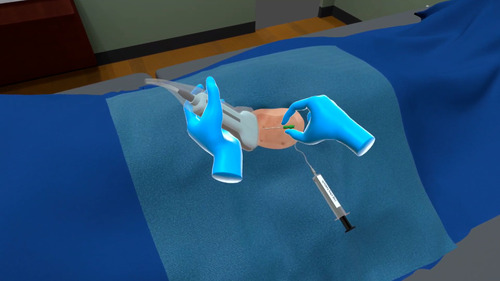
Fascia Iliaca Block
Sixty-eight-year-old John Spencer was admitted to the Emergency Department after slipping on wet pavement. He experienced a sharp pain in his right hip and has not been able to walk since then. X-ray revealed a right hip fracture, which calls for a Fascia Iliaca Block.
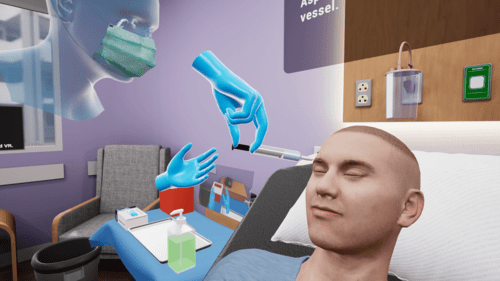
Supraorbital Nerve Block
A supraorbital nerve block is done to provide immediate localized anesthesia. This could be done for a number of reasons from laceration to removal of foreign object. In this case, it is a laceration on the forehead.

Digital Block
Digital block is a nerve blocking technique used for performing painful procedures on the digits. It could be related to nail removal, foreign body removal or, as in this case, a laceration.

Dental Block
A dental block procedure is another name for anesthetizing that particular area of the mouth that needs some dental procedure. Learners practice this procedure in a safe virtual environment with a virtual patient.

IV Insertion and Removal
Clark, a 51-year-old male, requires an IV insertion as a pre-operative measure. As a nurse, your job is to place the IV correctly and as painlessly as possible. You will also have to remove the IV at the end of the treatment.
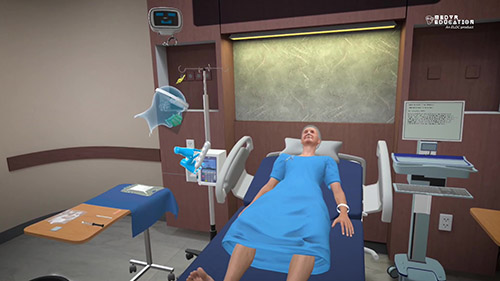
TPN Administration
Carolina Bell, 68, has been facing difficulty in oral intake of nutrition. Her doctor has ordered some IV nutrition. Total parenteral nutrition (TPN) will be administered to Central line access for this purpose.
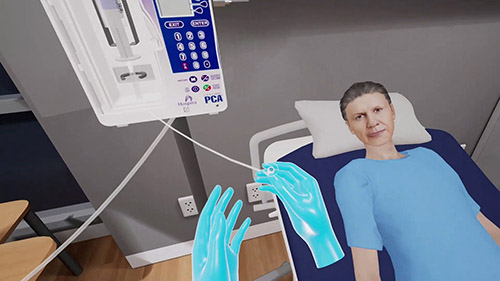
Mini Infusion Pump
Edna Thornton is 68 years old and is suffering from a constant sharp pain in the middle of her back. Her doctor has prescribed medication to alleviate her pain which is to be administered using a mini infusion pump.
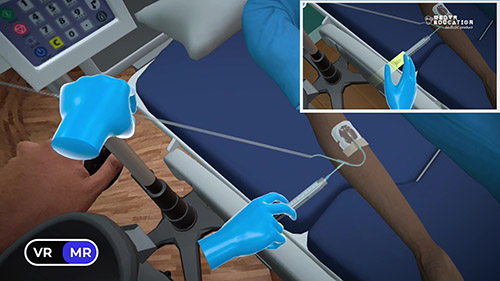
IV Push Medication
Naomi Williams, 42, is nauseous with no improvement. She has a normal saline 1liter bag running through a regular IV pump at 100mls/hr. To provide relief to Naomi, Ondansetron 4mg IV push has been prescribed by the doctor.

Transdermal Medication Administration
Joseph Walker, 62, is in the emergency room with chest pain. He is feeling a heavy pain on the left side of his chest. It seems to be going up to his neck. The doctor has prescribed him a transdermal medication.
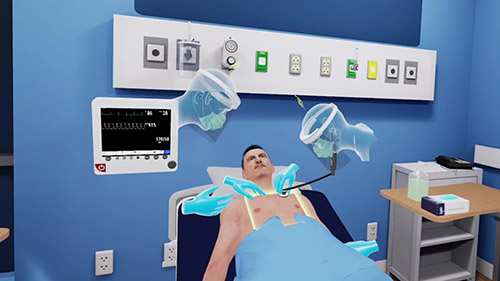
Nebulizer Medication Administration
Ethan More, 66, is having trouble breathing. An examination reveals wheezing in both lungs. He needs to be administered nebulizer medication of a bronchodilator to open his lung passages and make it easier for him to breathe.
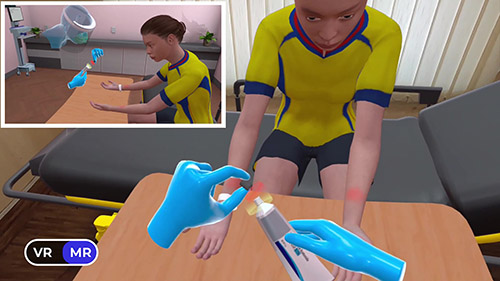
Topical Medication Administration
Twenty-three-year-old Haley Anderson is visiting the emergency room as she has developed an extremely itchy rash on her arms. The doctor has prescribed a topical medication as treatment.
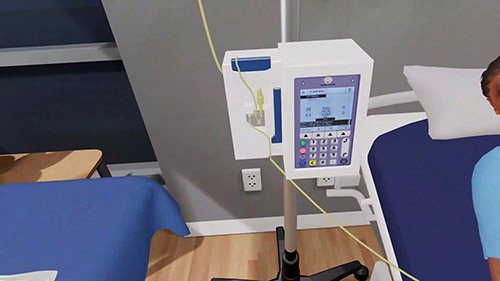
IV Piggyback Administration
Sara William is 68 years old. Her doctor has ordered to start her on antibiotics using the IV Piggyback Administration. Sara already has a normal saline 1liter bag running through a regular IV pump at 100mls/hr.

Intramuscular Injection
Seventy-two year old Sharon Johnson is visiting for a flu shot which is an intramuscular injection. Administering an IM injection requires skill and caution as a slight error can lead to serious complications.
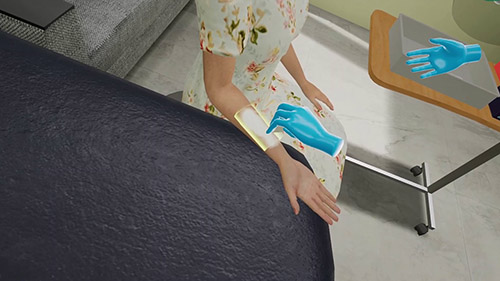
Intradermal Injection
Lisa is 38 years old and she is visiting for a for a tuberculosis skin test. The process involves performing an intradermal injection procedure to inject tuberculin in the lower part of the arm.
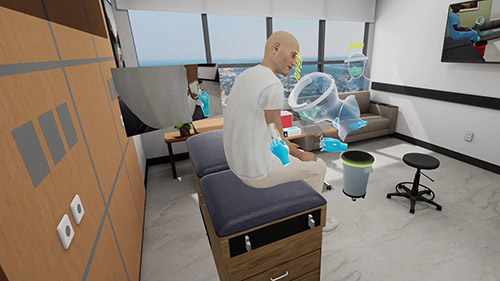
Subcutaneous Injection
Francisco Martinez, 72-years-old, is afflicted with rheumatoid arthritis. He has been prescribed an Enbrel shot, a subcutaneous injection to be administered somewhere on the back of the arm, inner thigh or abdomen area.

Eye Medications
Sixty-eight year old Edna Thornton requires an eye drop administration. She has been prescribed steroids by her doctor to help calm the redness and itchiness caused due to allergies.
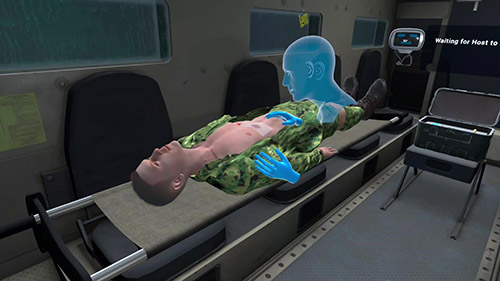
Airway Management – TCCC
Due to an injury in combat, a soldier is suffering from an obstructed airway. Immediate measures must be taken to restore airway patency. As part of the team, take necessary steps towards airway management.
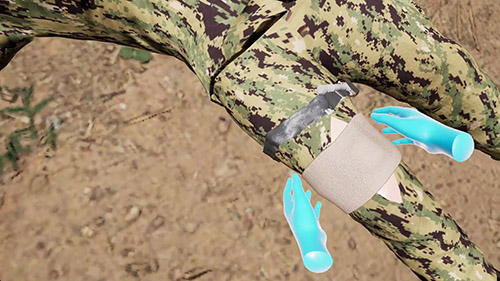
Hemorrhage Control – TCCC
A fellow soldier has suffered a serious injury in combat. Immediate hemorrhage control measures must be taken to save his life. Take steps to control his bleeding till dedicated medical attention can be made available.

Autism De-escalation
Seventeen-year-old Alex Johnson has autism spectrum disorder (ASD). When he fell from his bike he sprained his wrist, requiring a splint. The unfamiliar emergency department at the hospital causes Alex to get anxious and overwhelmed. Verbal de-escalation must be applied to calm him.
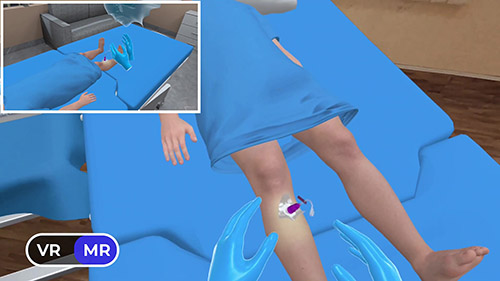
Pediatric Intraosseous Infusion
Pediatric intraosseous infusion is initiated when vascular access is required emergently but is difficult to achieve via peripheral vain. Compared to adults, the level of care required is greater for pediatric patients.
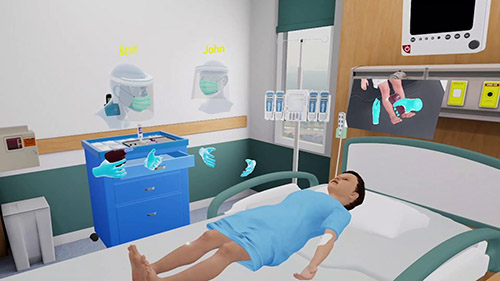
Pediatric DKA
Anna is in the ED unwell with abdominal pain and vomiting. She has received a 20cc/kg bolus for initial hypotension and an insulin bolus of 8 units. EMS lost the IV en route, and the patient is now more somnolent in the ED.
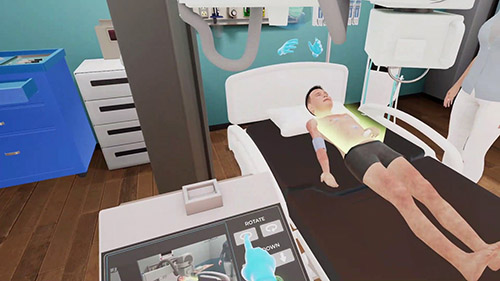
Pediatric Anaphylaxis
Kevin, 7, is known to be allergic to peanuts. Ten minutes after eating a cake, he developed wheeze, shortness of breath and rash. His mother administered his epinephrine auto-injector and called EMS.
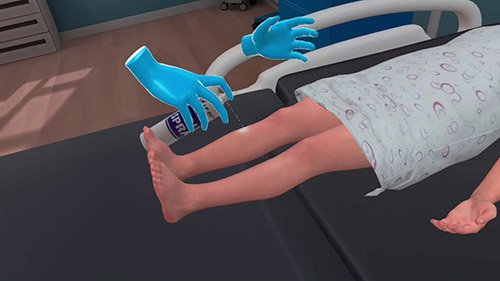
Pediatric Septic Shock
Olivia, 4, is in ED as she is lethargic and “not herself”. She has had a fever and cough for the past three days. On arrival she looks toxic, has delayed capillary refill, a glazed stare, tachypnea, and tachycardia.

Pediatric SVT
Jerry, a 12-month-old infant, and has been brought into the ED by his parents. He has been fussy, crying all night, not been feeding well, and vomited once. Jerry is found to have a significantly elevated heart rate.
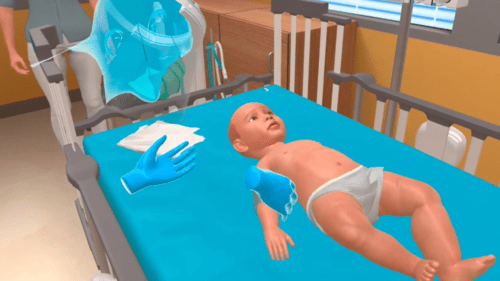
Pediatric Bronchiolitis
Seven month old Tania’s older sibling developed a cold four days prior and next day Tania had a running nose and a cough. Yesterday she did not eat or drink much and this morning she had some noisy breathing.
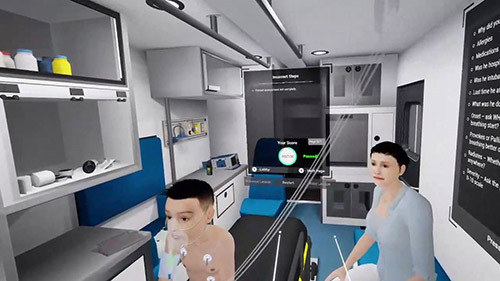
Pediatric Asthma Exacerbation
Charlie Jansen, 7-year-old, has a known case of asthma. His three-days old cough is accompanied by wheezing and a worsening shortness of breath. The puffer is not helping and Charlie’s condition is getting worse.

IV Insertion and Removal
Clark, a 51-year-old male, requires an IV insertion as a pre-operative measure. As a nurse, your job is to place the IV correctly and as painlessly as possible. You will also have to remove the IV at the end of the treatment.

Staple Removal
Jennifer Brown is visiting the physician’s office for a staple removal procedure ten days after she had an excision of squamous cell carcinoma. The incision is three inches long with seven staples on the right lower leg.
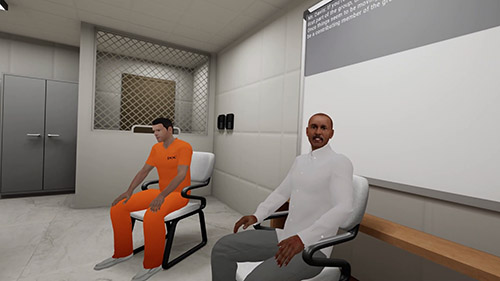
Substance Use Disorder
The Stages of Change Substance Use Disorder (SUD) treatment VR program focuses on working with participants to develop skills necessary to create a positive and productive intervention for those early in SUD treatment.
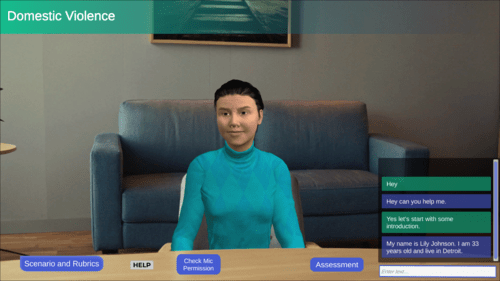
Domestic Violence Assessment
Lily is married to Paul and has two small children. On a visit to her doctor, she had indicated being in a domestic violence relationship. Lily does not want her abusive relationship to affect them.
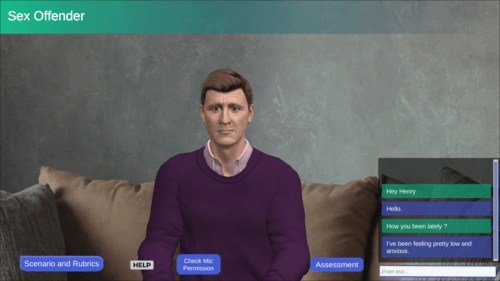
Sex Offender Assessment
Forty-three-year-old Harry is a convicted sex offender. He has recently been released after serving a term of seven years. Harry wants to correct his pro-offending thoughts, beliefs and behavior and change for the better.
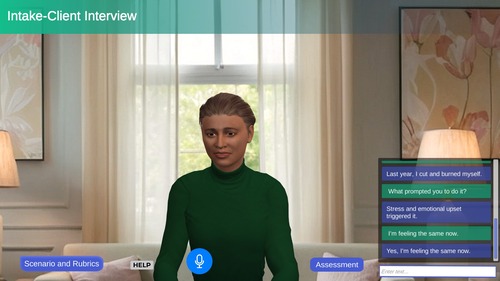
Intake Client Interview
Kate in a 38-year-old woman displaying strong urges to committing self-harm. She accepts having cut herself once and burned herself. The first incident occurred sometime in her early teens and the last one was a year back.

Taking Sexual History with 5Ps
Twenty-one-year-old Tracy is at the emergency department for pelvic pain and genital lesions. She has an active sexual life. She uses protection sometimes and has had sex with partners who use injectable drugs.
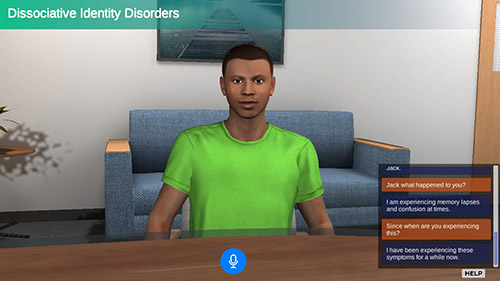
Dissociative Identity Disorder Assessment
Jack, 31-year-old male, realizes that he tends to forget things. Driving from one place to the other, he can’t recall what happened during his drive. At times, when talking to someone, he misses out part of the conversation.

NRP Equipment Review
This simulation is designed to provide hands-on experience in using essential NRP equipment, ensuring healthcare providers exhibit knowledge of appropriate use of all items needed in neonatal emergencies.

Introduction to NRP Equipment
The Introduction to NRP Equipment simulation provides a structured walkthrough of resuscitation equipment helping learners practice inspect, assemble, and identify the purpose of each device in preparation for neonatal emergencies.
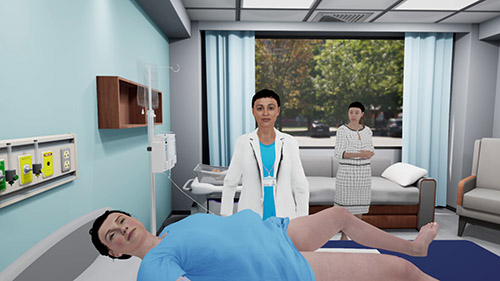
Postpartum Hemorrhage
PPH is a serious vaginal bleeding post childbirth. It can be life threatening if not identified and controlled in time. Healthcare professionals must be well-versed in recognizing the situation getting help in a timely manner.
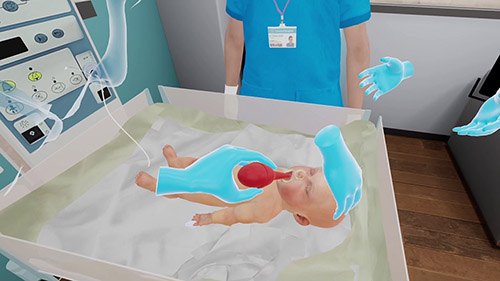
Neonatal Resuscitation
This is a precipitous delivery. The mother thinks she is term and has no prenatal care history. The baby is limp, not breathing and no meconium staining is noted in the amniotic fluid.
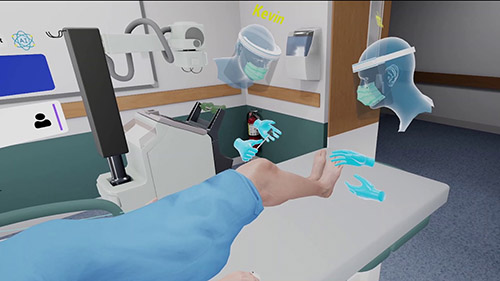
Preeclampsia
Alice Jones, 20, delivered a baby five weeks ago. One week back she developed an upper abdominal pain and later had a headache and shortness of breath. Her pain has worsened, she is nauseous and has vomited once.
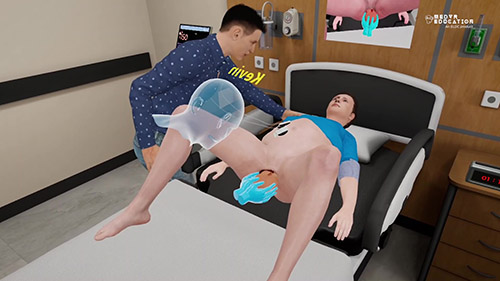
Shoulder Dystocia
A 30-year-old patient is G1 P0 at 40 weeks gestation. She has been pushing for one and half hours and is exhausted. The baby’s head delivers, and shoulder dystocia occurs.

Air Ambulance – Hemorrhagic Stroke
Jason, 35-year-old male has had a headache for four days. He abruptly develops vision problems, goes unresponsive and starts seizing. On arrival EMS find Jason’s condition to be critical, prompting activation of an air ambulance for rapid transport to hospital.
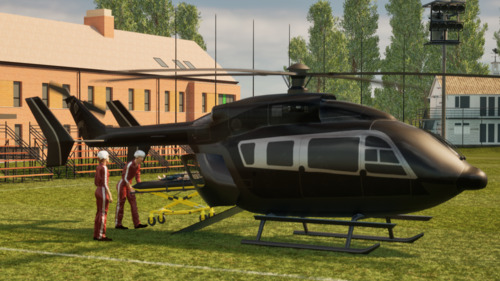
Pediatric Air Rescue: Seizure Care
While at school, eight-year-old Ella Robinson suffered a seizure and fell down the stairs. The teacher gave the prescribed medication and called for EMS. As medication does not control the seizures, an air ambulance is called to take her to a healthcare facility.
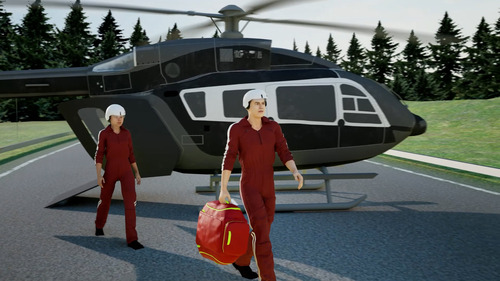
Air Ambulance: Critical Response
Thirty-two-year-old Donna was struck by a vehicle on the highway when she was riding her motorcycle. She has suffered abrasions to her face, chest and extremities. EMS find her in a critical state and request a helicopter to help transfer Donna to a trauma center.

Adult Tachydysrhythmia
Clara, 38-year-old female, experienced a sudden onset of palpitations and described it as ‘as if her heart was pounding out of her chest.’ Arriving 15 minutes after her call, EMS finds her in stable VT with a pulse.
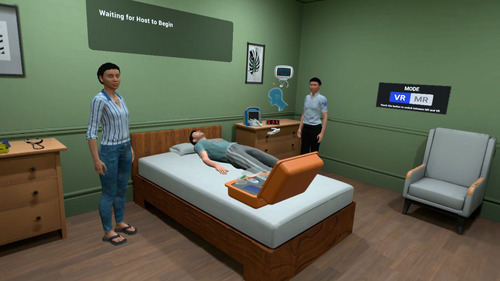
EMS Hypoglycemia
Jim, a 32-year-old insulin dependent diabetic male, is discovered unresponsive at home by his family. EMS arrive to find Jim with equal and reactive pupils and actively seizing with generalized tonic-clonic movements.
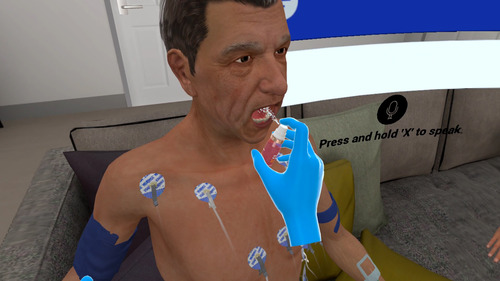
EMS – Congestive Heart Failure
James Williams, 70-year-old male, suffering shortness of breath has called 911. Paramedics arrive at his home to find him on his couch, pale and diaphoretic, with obvious respiratory distress. The team must respond immediately to ensure the safety of the patient.

EMS – Pediatric Drowning
Ten-year-old Benjamin, was found in the pool, face down and unconscious. When the EMS team arrive, they find the father administering CPR to the unconscious boy. The team must respond immediately to ensure the safety of the patient.
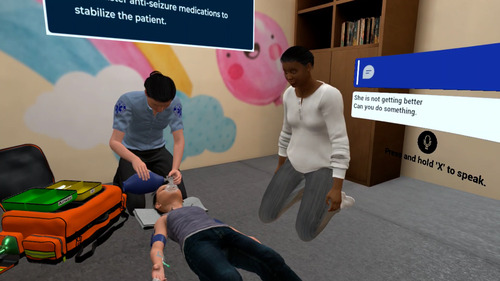
EMS – Pediatric Seizure
Seven-year-old Lily Thompson, with a history of epilepsy, is at school when she has a witnessed seizure. Her teacher administers the prescribed medication and calls for emergency medical services (EMS) when the seizure persists. Lily has no known medical problem or allergies.
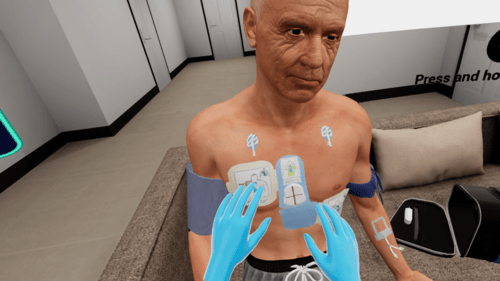
EMS Stroke
Alan Carter was complaining of a headache. He then started having trouble speaking and could not lift his left arm and leg. There was a noticeable facial droop on the left side. Ten minutes back his wife called 911. A FAST-ED exam will be used to examine the patient.
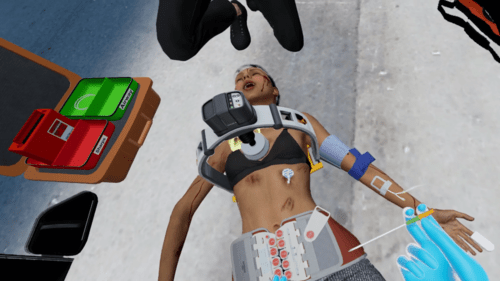
EMS Cardiac Arrest
A 24-year-old female on a bike has been hit by a car at 40 miles per hour. As the paramedic at the scene, you need to offer essential medical interventions like controlling bleeding, immobilizing fractures and restoring responsiveness.
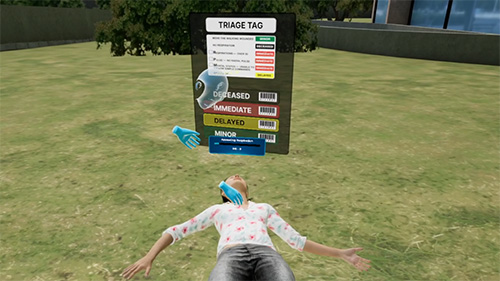
Mass Shooting Triage
It is a case of a mass shooting at a mall. There could be multiple casualties and injured victims. It is imperative to conduct a triage. Tagging and sorting will ensure due attention is paid to those in need of emergency care.
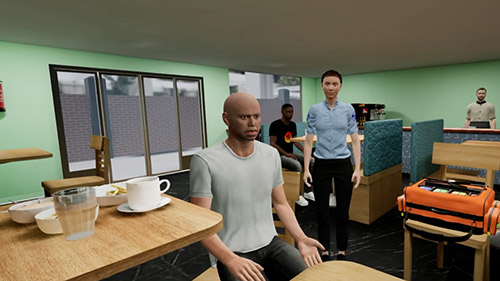
EMS Anaphylaxis
Fifty-one-year-old Jason Smith was having breakfast at a restaurant when he developed an allergic reaction. He is struggling to breathe and has visible rashes on his body. The EMS was notified immediately.
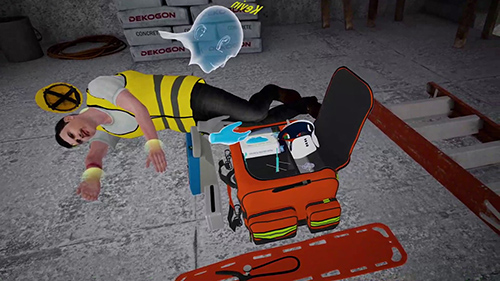
Patient Assessment – Trauma
Jacob Smith, 38, is a construction worker who fell off a ladder, around 10 feet. He has suffered several injuries to his head and arm that need to be assessed and treated.
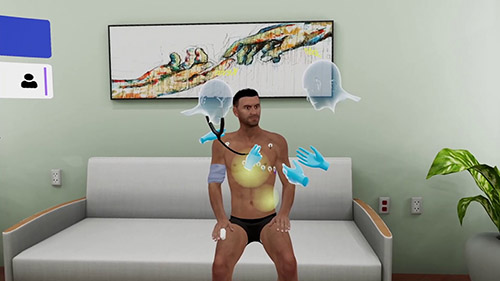
Chest Pain
Mark Willey is a 54-year-old male car mechanic with a history of hypertension and coronary artery disease. He began having chest pains about 6 hours ago while working in his garage.
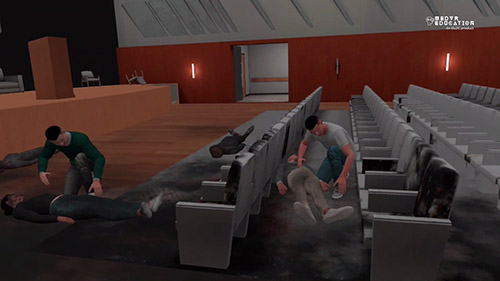
EMS Triage
A fire broke out in a packed auditorium. First responders at the scene must conduct triage assessment during this mass casualty incident and identify correct triage level of victims.
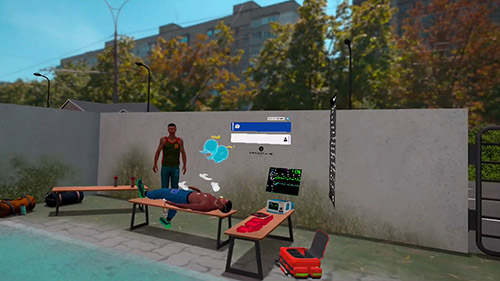
Tachycardia – Paramedic
Connor is an 18 year old boy who experienced discomfort in his chest during a game of basketball and requested medical assistance. As a paramedic, visit the location with your team, examine Connor and take necessary steps.

Pediatric Intraosseous Infusion
Pediatric intraosseous infusion is initiated when vascular access is required emergently but is difficult to achieve via peripheral vain. Compared to adults, the level of care required is greater for pediatric patients.

Pediatric Asthma Exacerbation
Charlie Jansen, 7-year-old, has a known case of asthma. His three-days old cough is accompanied by wheezing and a worsening shortness of breath. The puffer is not helping and Charlie’s condition is getting worse.

Supraglottic Airway
Supraglottic Airways are devices that are inserted into a patient’s pharynx to keep the upper airway open and facilitate unobstructed ventilation.

Oral Airway Insertion
Oral Airways or OPAs are airway adjuncts inserted into an unconscious or minimally responsive patient’s mouth. This is done to maintain airway patency by preventing the tongue from covering the epiglottis.

IV Insertion and Removal
Clark, a 51-year-old male, requires an IV insertion as a pre-operative measure. As a nurse, your job is to place the IV correctly and as painlessly as possible. You will also have to remove the IV at the end of the treatment.
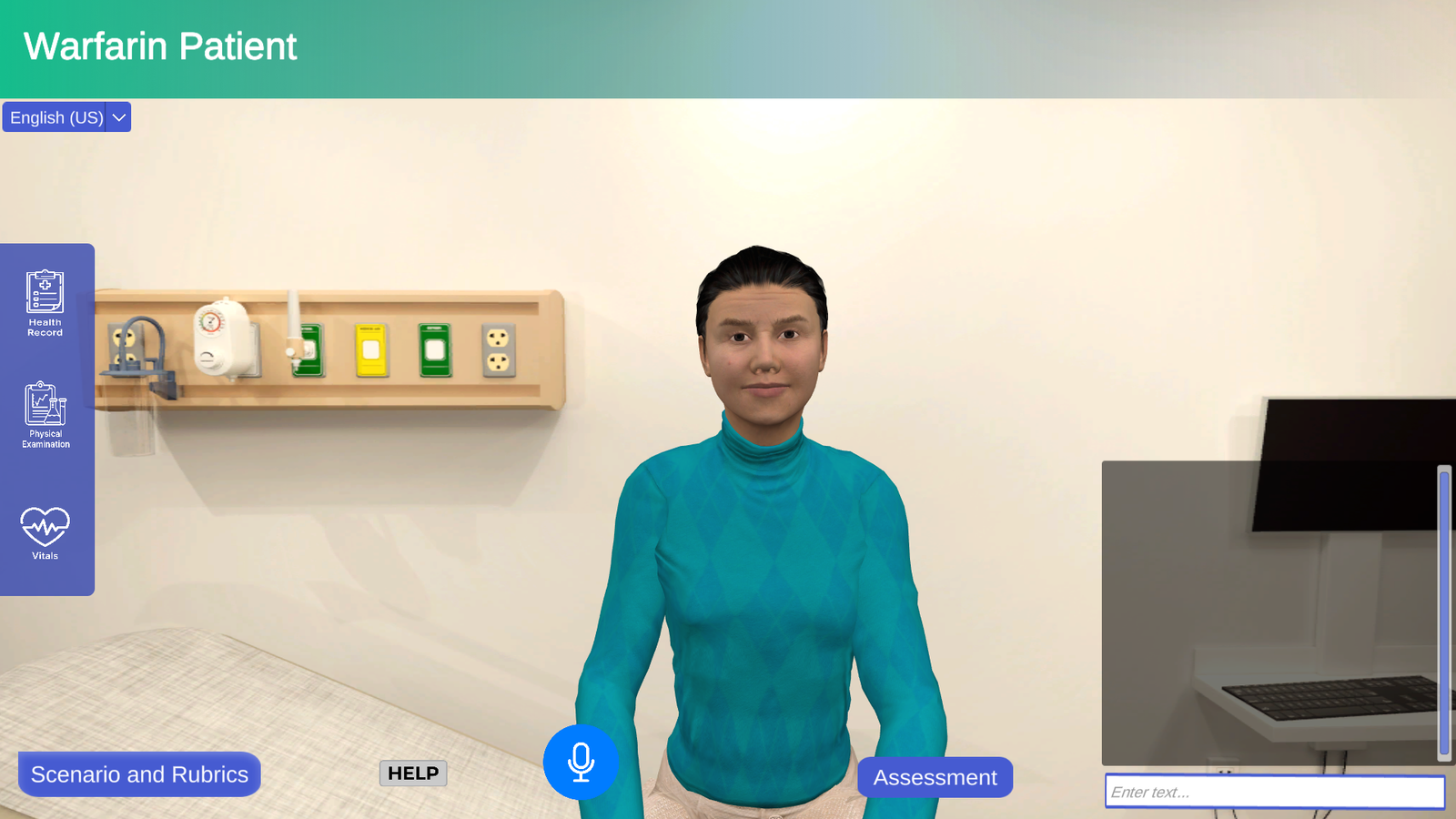
Warfarin Patient
Esmeralda, 58-year-old female, she is at the Outpatient Anticoagulation Clinic for routine warfarin management following a heart procedure two months ago. Assess her adherence, identify potential interactions or factors affecting INR stability, and address her concerns about long-term warfarin use.
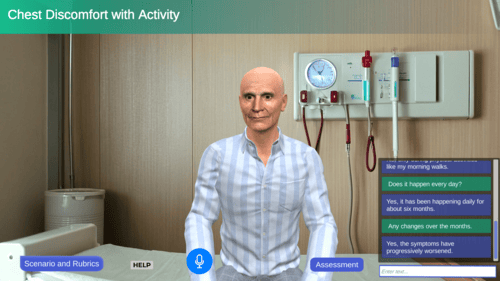
Chest Discomfort with Activity
Seventy -year-old Richard Adams is experiencing chest pain and breathlessness during physical exertion, especially during his morning walks, with each episode lasting a few minutes. The symptoms started six months ago and have worsened progressively, limiting his ability to exercise.
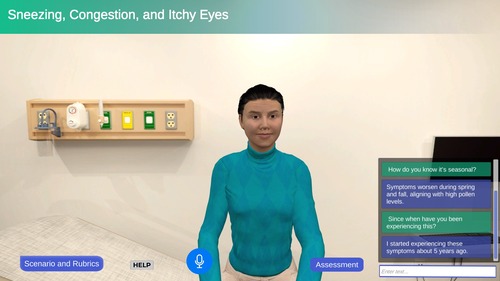
Sneezing, Congestion, and Itchy Eyes
Jane is being evaluated for recurrent episodes of sneezing, nasal congestion, and itchy eyes, which especially occur during spring and fall. Her symptoms have been present for a few weeks and typically last for 4-6 weeks, aligning with the seasons.
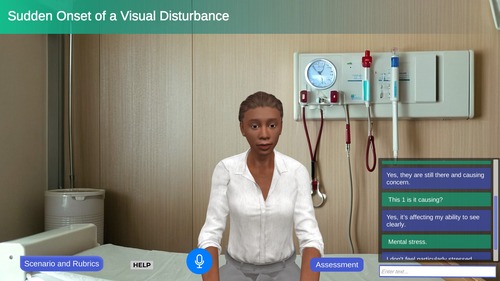
Sudden Onset of a Visual Disturbance
Linda Nguyen is seeking medical help after she started seeing flashing lights and a shadow over her vision in her right eye. The visual change is adversely affecting her ability to see clearly causing grave discomfort.
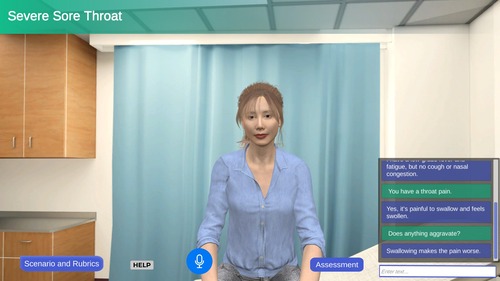
Severe Sore Throat
Emily Chen is visiting her primary care provider to get help for her severely sore throat. There was a sudden onset of symptoms three days earlier causing difficulty in swallowing, there is redness in her throat and the glands feel swollen. She is also experiencing low grade fever.
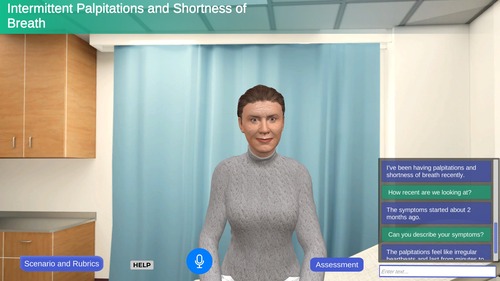
Intermittent Palpitations and Shortness of Breath
Elizabeth Martinez, 68-years-old, is experiencing palpitations and shortness of breath. Her symptoms started two months ago but have become frequent recently. Episodes last from a couple of mintues to several hours and feel like irregular heartbeats.

Tired and Fatigued
Megan O’Sullivan has been feeling tired and fatigued lately. She finds it difficult to go to sleep and has tried over the counter medication for her insomnia. She has lost her appetite and has lost 10lbs in the last three months. She has never been diagnosed for any mental illness.
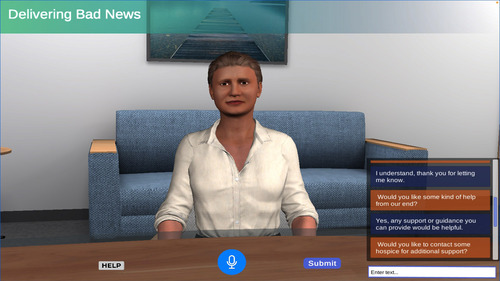
Delivering Bad News
Kirsten’s husband Rob has been diagnosed with terminal lung cancer and Kirsten must be informed. This scenario helps participants learn to navigate such delicate situations and deliver empathetic support.
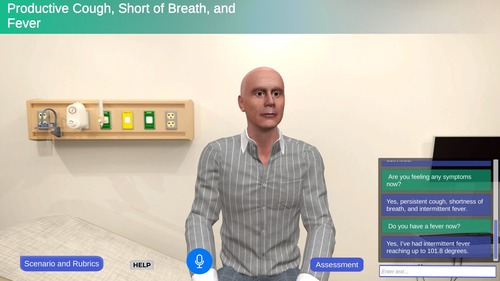
Productive Cough, Shortness of Breath, and Fever
Thomas Brown is here for an evaluation of a productive cough and fever he’s had for the past few days with increasing shortness of breath.
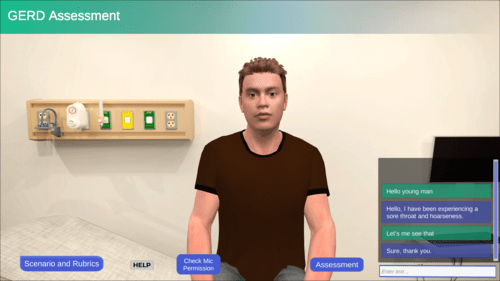
GERD Assessment
Carlos, 36 years old, has recently been experiencing a sore throat and hoarseness. More of a discomfort than a pain. Soreness increases after he has a large meal or lies down after a meal. Spices and tomatoes make it worse.
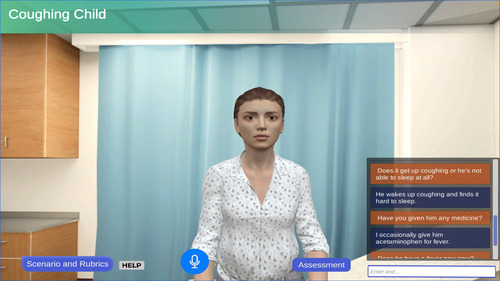
Coughing Child
Joan is visiting a pediatric primary care clinician with her 2-year-old son Aiden to get help for his persistent cough, wheezing, and runny nose.
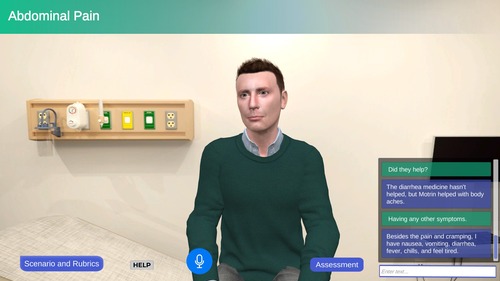
Abdominal Pain
David is suffering abdominal discomfort for the past three days. He’s had a 100F fever with a cramping pain in his belly. He does not have any shortness of breath but he feels nauseous with an urge to vomit.
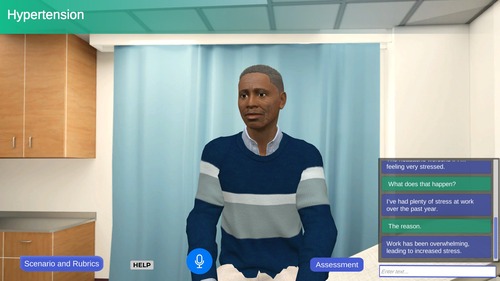
Hypertension
Andrew works as an accountant in a office. He leads a relatively idle lifestyle with extended hours behind the desk and regular takeaway meals. Recently, he has been getting headaches which are not getting any better.

Gout
Roberto is 47 years old and has come in with a severe pain in his right toe. He has never had this kind of pain before and has not even injured his toe recently.
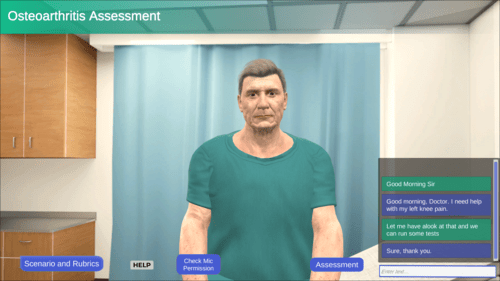
Osteoarthritis
Billy Crudup, 56-years-old, is seeking care for a left knee pain that flared up three days ago. He does not remember having suffered any injury to his knee. It’s a dull and constant pain that gets worse on walking.
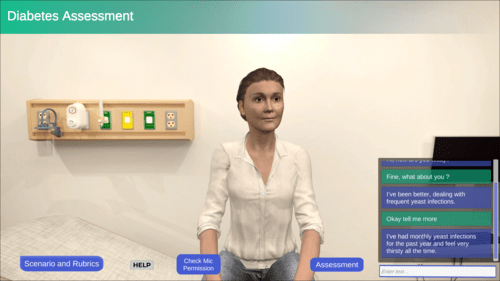
Diabetes Assessment
Shyanne, 34 years old, is suffering from frequent vaginal yeast infections for over a year. Her water intake has gone up significantly since she is often feeling thirsty during the day and washroom visits have increased.

Herniated Disc Assessment
Janet, 42 years old, started experiencing a pain in her left leg the previous night. It started all of a sudden and starts from her left buttock going all the way down to her left toe. She does not remember getting hurt.
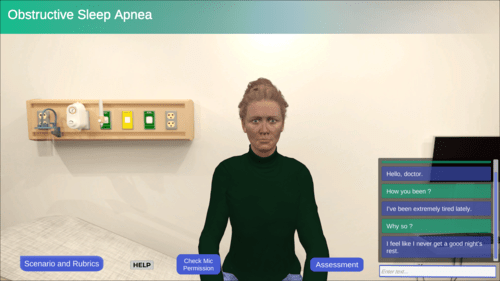
Obstructive Sleep Apnea
Alethea, 46 years old female, lives in South Carolina with her husband Robert feels extremely tired during the day. Her husband says she snores loudly and sometimes it seems like she stops breathing for a couple of seconds.

ED Thoracotomy
A 26-year-old male is brought to the trauma room with a single stab wound to his cardiac box. He has been intubated by the paramedic team. ED thoracotomy will have to be performed to gain access to the heart and suture the wound.

Pilonidal Abscess Removal
A 29-year-old patient is visiting for a pilonidal abscess removal. She has got an abscess on her upper right buttock and has been given conscious sedation to perform the procedure. Practice the procedure from preoperative protocols to postoperative dressing in a risk-free environment.
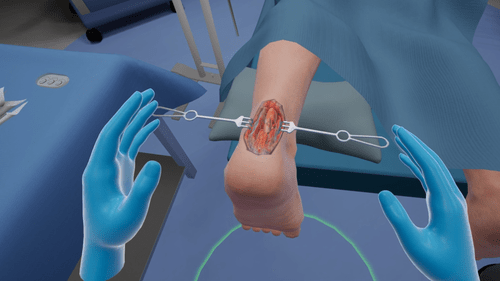
Achilles Tendon Repair
Achilles tendon repair surgery helps fix a damaged Achilles tendon. The Achilles tendon is the largest tendon in the body, and a ruptured or damaged tendon causes pain and swelling near the heel making movement difficult.
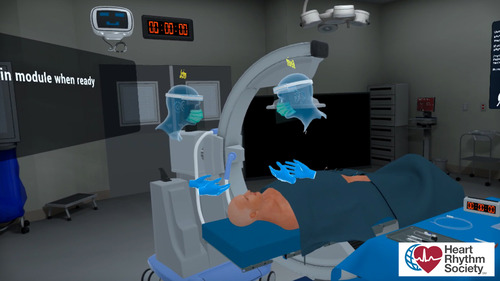
Pericardiocentesis
The Emergent Pericardiocentesis Simulator will guide the learner through the steps of an emergent pericardiocentesis with the intention of familiarizing electrophysiologists to this important, but rare procedure skillset.
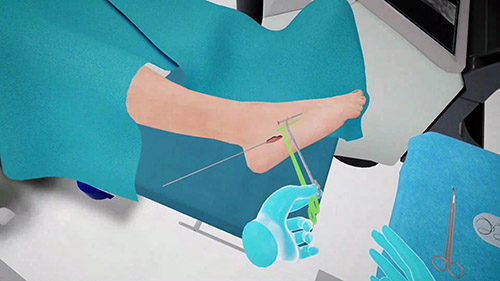
Jones Fracture
Jones fracture refers to a fracture in the fifth metatarsal bone in the foot. This is the bone that connects the pinkie toe to the base of the foot. Surgery is one of the most effective ways to treat this fracture.
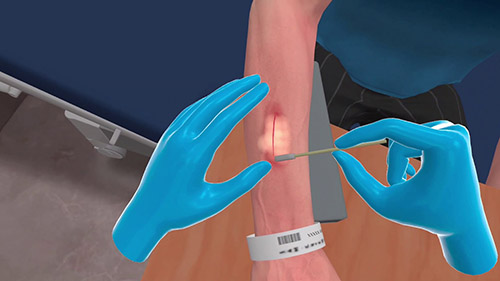
Simple Interrupted Suture
Jacob Smith is 40 years old. He was accidentally hit and now his wound needs to be closed using a simple interrupted suture. The procedure is a fairly simple one but requires precision.
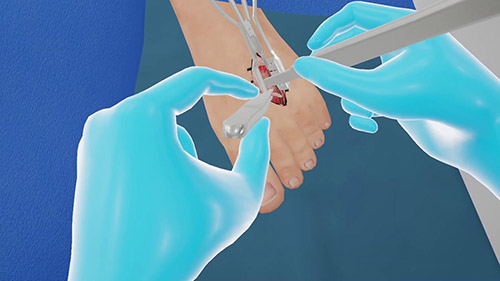
Neuroma Excision
Neuroma excision refers to the surgical process of removing an enlarged nerve called a neuroma, or Morton’s neuroma. It occurs between the toes and causes a sharp pain that feels like stepping on a marble.
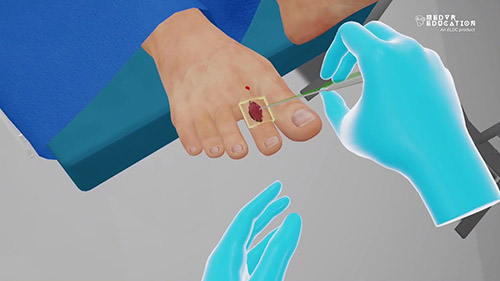
Digital Arthroplasty
Digital arthroplasty is one of the most common ways to correct hammer toes. It involves cutting affected ligaments and bones and using pins as fusion devices to bind together the cut bones.

S-ICD Implantation
Subcutaneous implantable cardioverter defibrillator or S-ICD implant involves the placement of an electronic medical device under the skin to prevent sudden cardiac complications.
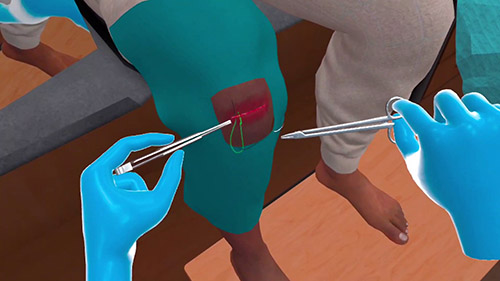
Horizontal Suturing
Dylan Roberts, 34-year-old male, has suffered a laceration on his right knee due to an accident during a game of football. The wound is 3 cm long and requires 4-5 stitches. Horizontal suturing is required to close the wound.

Lateral Canthotomy
Marvin Jones, 21-years-old, was involved in a motor vehicle collision. He has suffered blunt force and facial injuries. You need to check the IOP using a tonometer, and if required, perform a lateral canthotomy.

IV Insertion and Removal
Clark, a 51-year-old male, requires an IV insertion as a pre-operative measure. As a nurse, your job is to place the IV correctly and as painlessly as possible. You will also have to remove the IV at the end of the treatment.

Staple Removal
Jennifer Brown is visiting the physician’s office for a staple removal procedure ten days after she had an excision of squamous cell carcinoma. The incision is three inches long with seven staples on the right lower leg.

NG Tube Insertion
Jason, a 45-year-old male has recently undergone an abdominal surgery. As a postoperative procedure, his doctor has suggested an NG tube insertion to administer medication and nutrients, and facilitate gastric lavage.
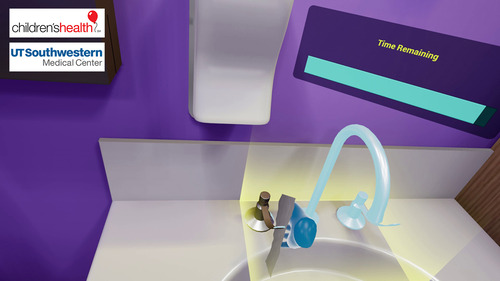
Patient Room Cleaning
As part of the Patient Room Cleaning VR program, learners are introduced to a patient’s room and demonstrated the cleaning methods followed including high-risk touch points and the AIDET procedure.
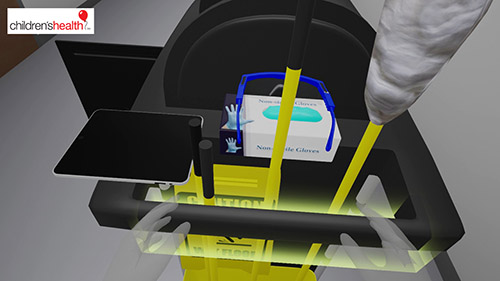
Operating Room Cleaning
As part of this Operating Room Cleaning learning solution, training and assessment, learners are provided training and practice in procedures related to entering the room to cleaning and finally exiting.
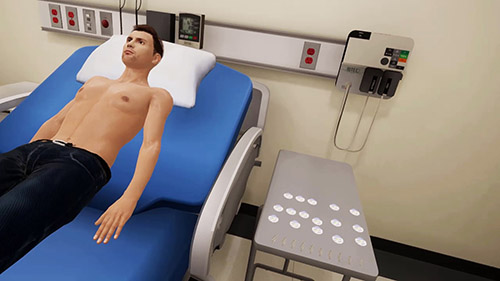
ECG
The ECG procedure may not be difficult to perform but surely requires competence and accuracy. Each electrical current of the heart must be precisely traced as is helps in deciding upon the course of care and treatment.

Physical Therapy Aide
A Physical Therapy Aide must be well-trained in a range of skill-sets that help them perform their tasks with expertise. The patient should feel at ease working with the aide.
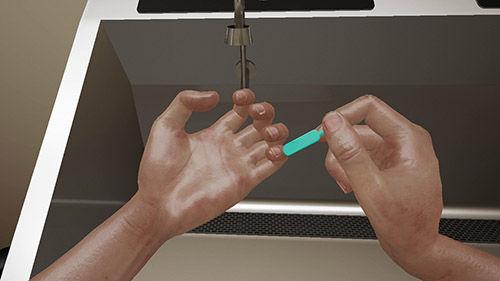
Surgical Attire & Hand Antisepsis
Surgical hand antisepsis is a routine process carried out before undertaking any invasive procedure. The purpose of the hand antisepsis is to destroy and prevent the growth of micro-organisms.
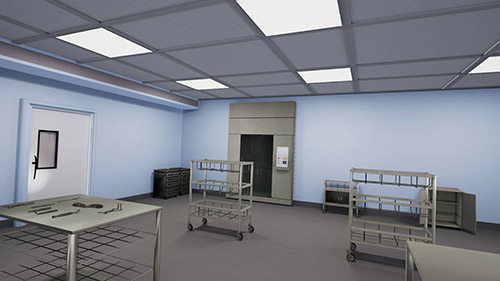
Central Sterile Processing
Sterilization of medical and surgical instruments is a significant process that helps prevent the spread of pathogens. This calls for thorough training for personnel working in the Central Service Department.

Phlebotomy
In this VR training, learners are provided with equipment like needles, tubes, lancets, blood collection devices, sample labeling material and gauze to bandage the puncture site to provide a realistic phlebotomy experience.

EKG
Thirty-eight-year-old Paul Anderson requires an EKG examination. To ensure a correct reading, leads and electrodes will have to be placed in precise locations.
